
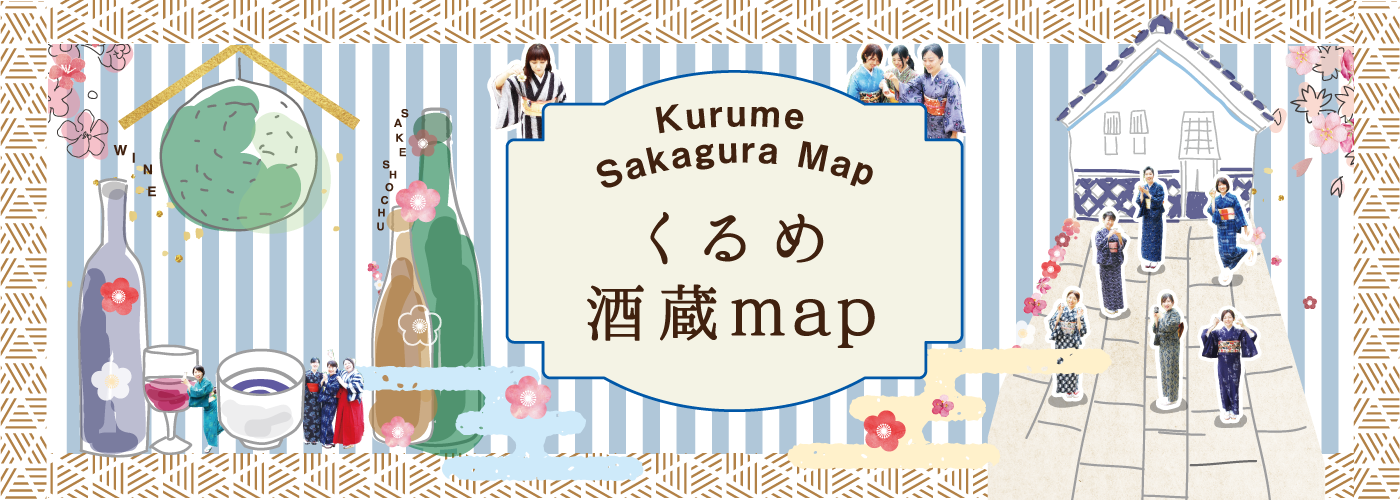
With its abundant water sources and high-quality rice, Kurume is a city that has long prospered in sake production.
Even now, it is proud to be one of Japan's leading sake-brewing areas.
In addition to sake, Kurume also produces a variety of alcohol, such as shochu, liqueur and wine.
Events where you can sample sake are held year-round, so please be sure to savor some of Kurume's select alcoholic beverages.
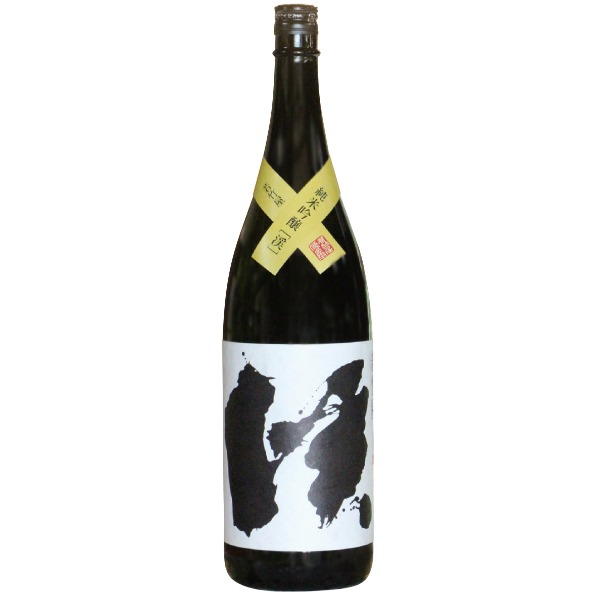
Crisp and light, this sake goes softly down the throat.
Nihonshu/Junmai Ginjo-shu/Best enjoyed with meals
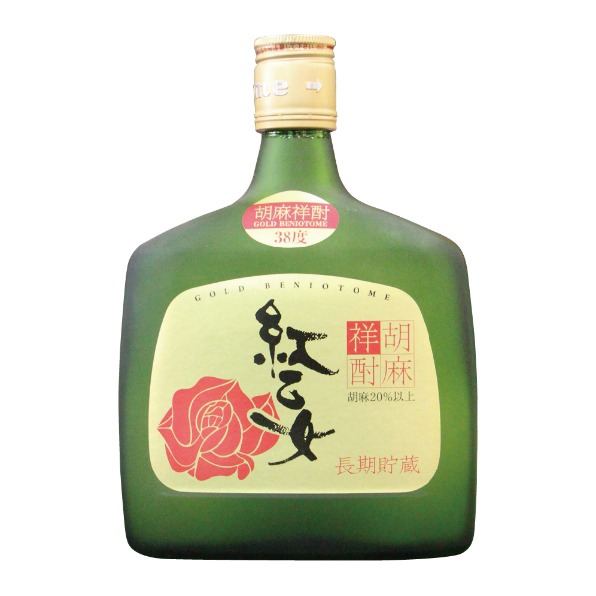
The mellow aroma of sesame expands in your mouth.
Shochu/Goma Shochu/Highly recommended after meals
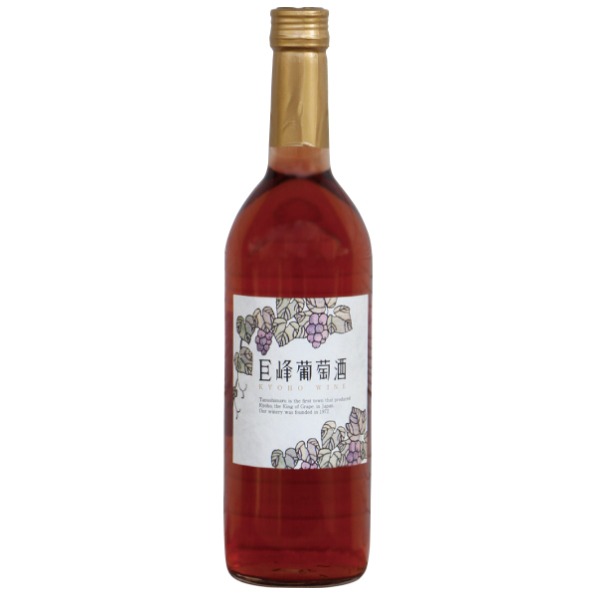
After pressing, the tart sourness of Kyoho grapes mellows out into a pleasant wine.
Fruit Sake/A new type of wine you can drink like Japanese sake
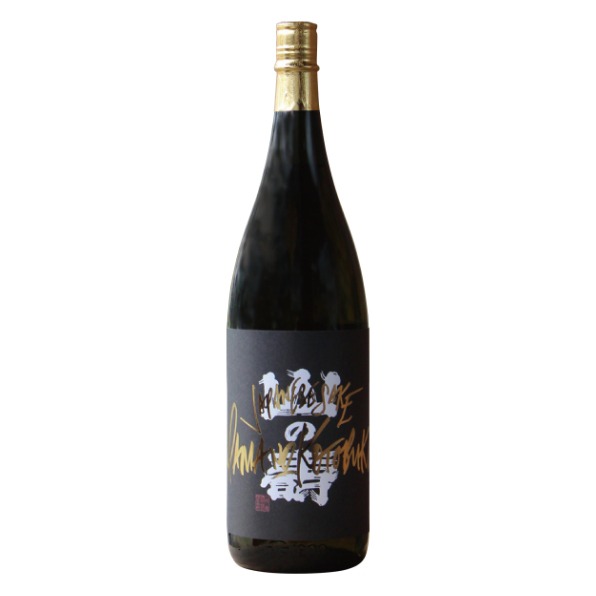
Its floral aroma leaves a clean and balanced taste.
Nihonshu/Junmai Daiginjo/Perfect for special occasions such as parties!
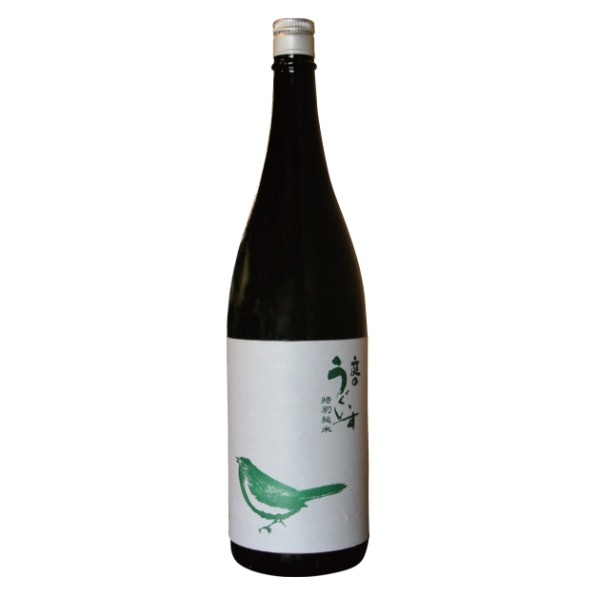
Light and refreshing, with a crisp and clean taste
Nihonshu/Tokubetsu Junmai-shu/Made with yeast cultured in-house
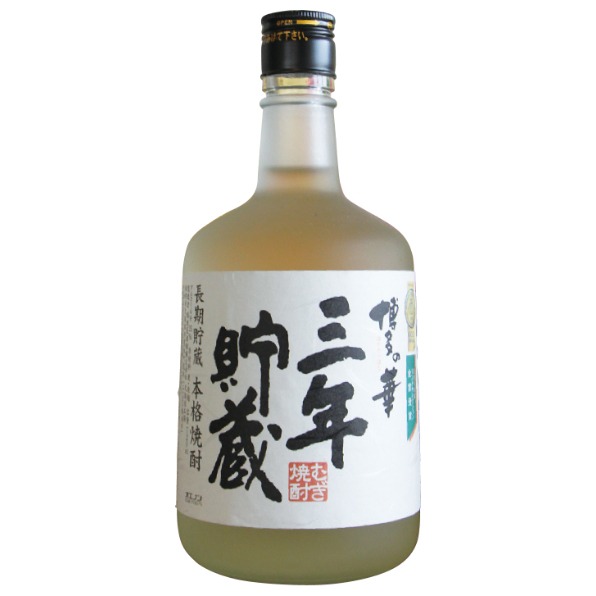
Its rich aroma and mellow flavor stand out.
Shochu/Mugi (Barley) Shochu/This won the Monde Selection Gold Medal!
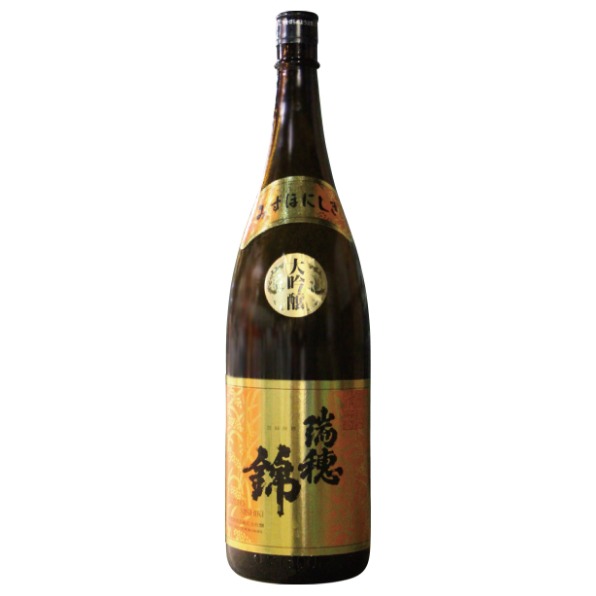
It features a fruity aroma and a light, clean finish.
Nihonshu/Daiginjo-shu/An extravagant sake with a rice polishing ratio of 35%
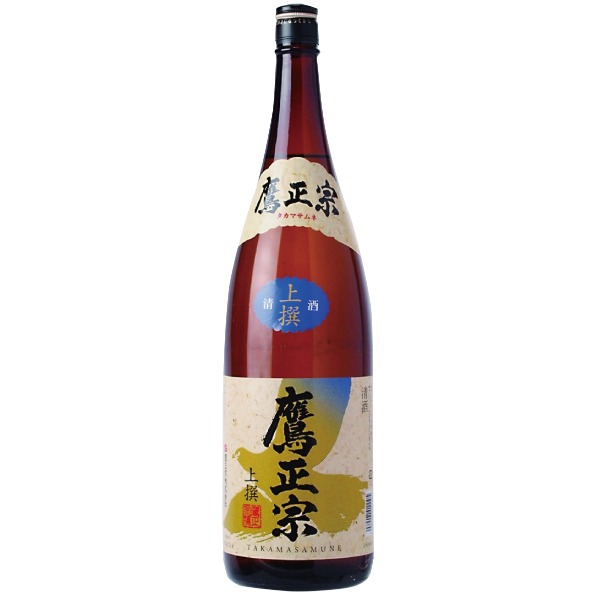
Its light, refreshing flavor and medium body will keep you coming back for more!
Nihonshu/Futsu-shu (Regular Sake)/Ideal for both everyday drinking and gifting
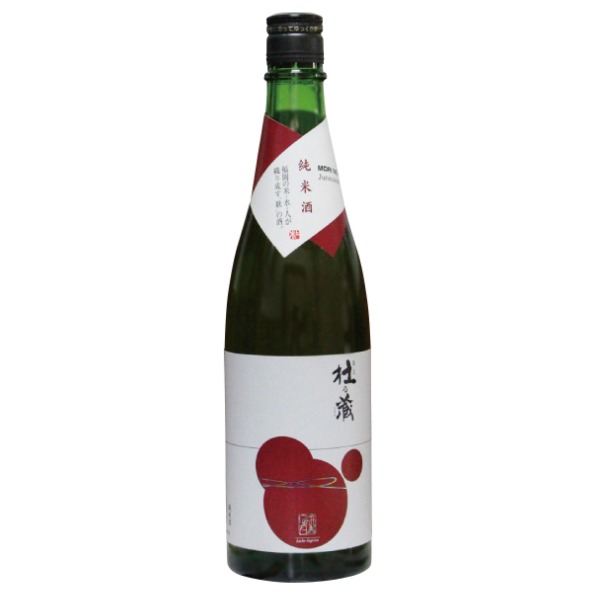
Featuring a smooth, clean and familiar flavor
Nihonshu/Junmai-shu/Best served slightly chilled or warmed up
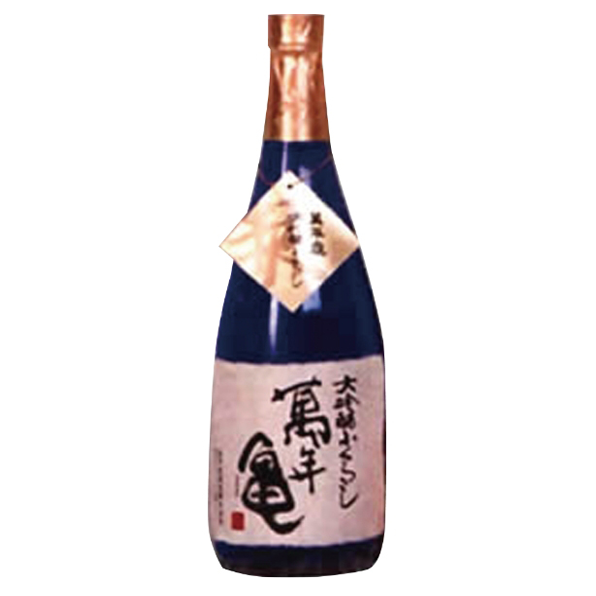
The time and effort of pressing makes a masterpiece.
Nihonshu/Daiginjo-shu/A top-class sake with a rice polishing ratio of 40%
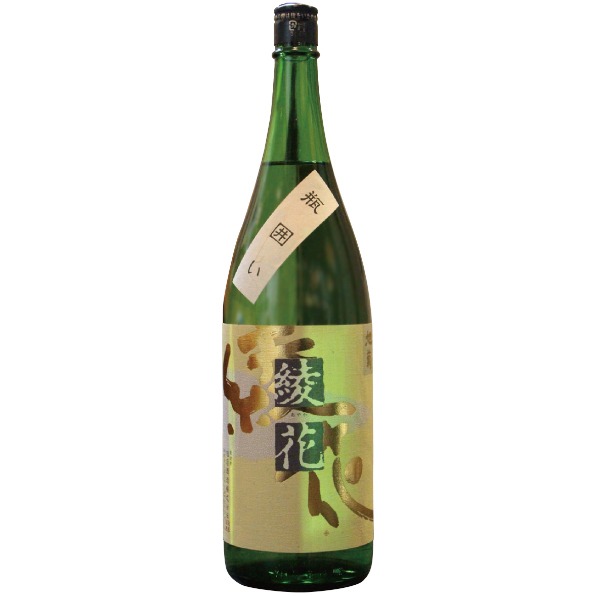
Newcomers to sake can savor its gentle flavor.
Nihonshu/Junmai-shu/Whether chilled or warmed up, enjoy it as you like!
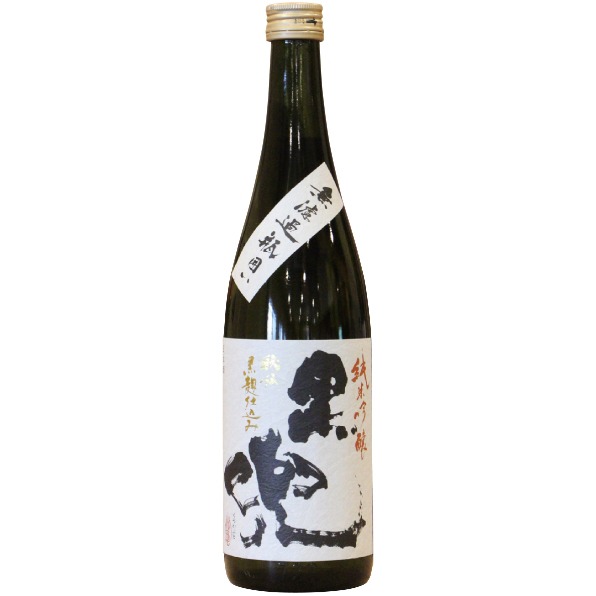
Brewed with black koji (sake mold) for a fruity taste
Nihonshu/Junmai Ginjo-shu/Drink it slightly chilled in a thick cup.
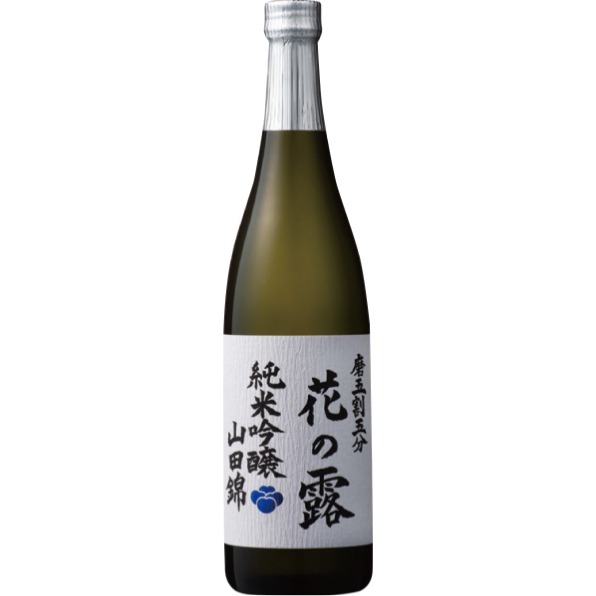
This not-too-acidic sake features a pleasant aroma.
Nihonshu/Junmai Ginjo-shu/Polished to a ratio of 50%, Yamada Nishiki brewing rice is fermented at a low temperature.
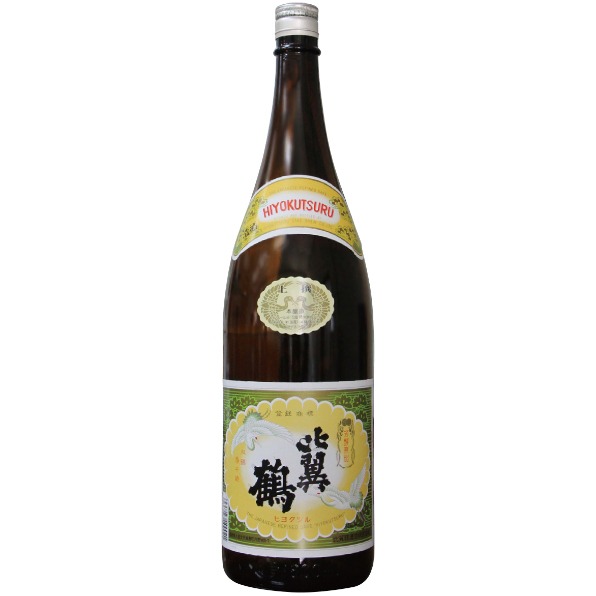
Savor its old-time flavor, either warmed or chilled.
Nihonshu/Honjozo-shu/This traditional sake has received numerous honors.
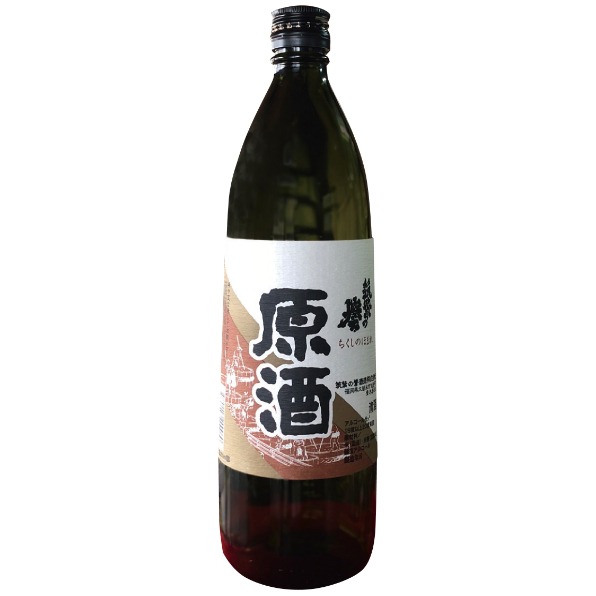
Handcrafted from steamed rice for umami and depth
Nihonshu/Futsu-shu (Regular Sake)/No water is added after pressing this undiluted sake.










 visit to sake storehouse
visit to sake storehouse taste
taste shopping & souvenir
shopping & souvenir online shopping
online shopping


Their motto is, "Drink this sake while spending important time with important people". Enjoy tasting and shopping as you feel the energy and old-fashioned atmosphere produced at Wakatakeya's warehouse, built over 300 years ago.
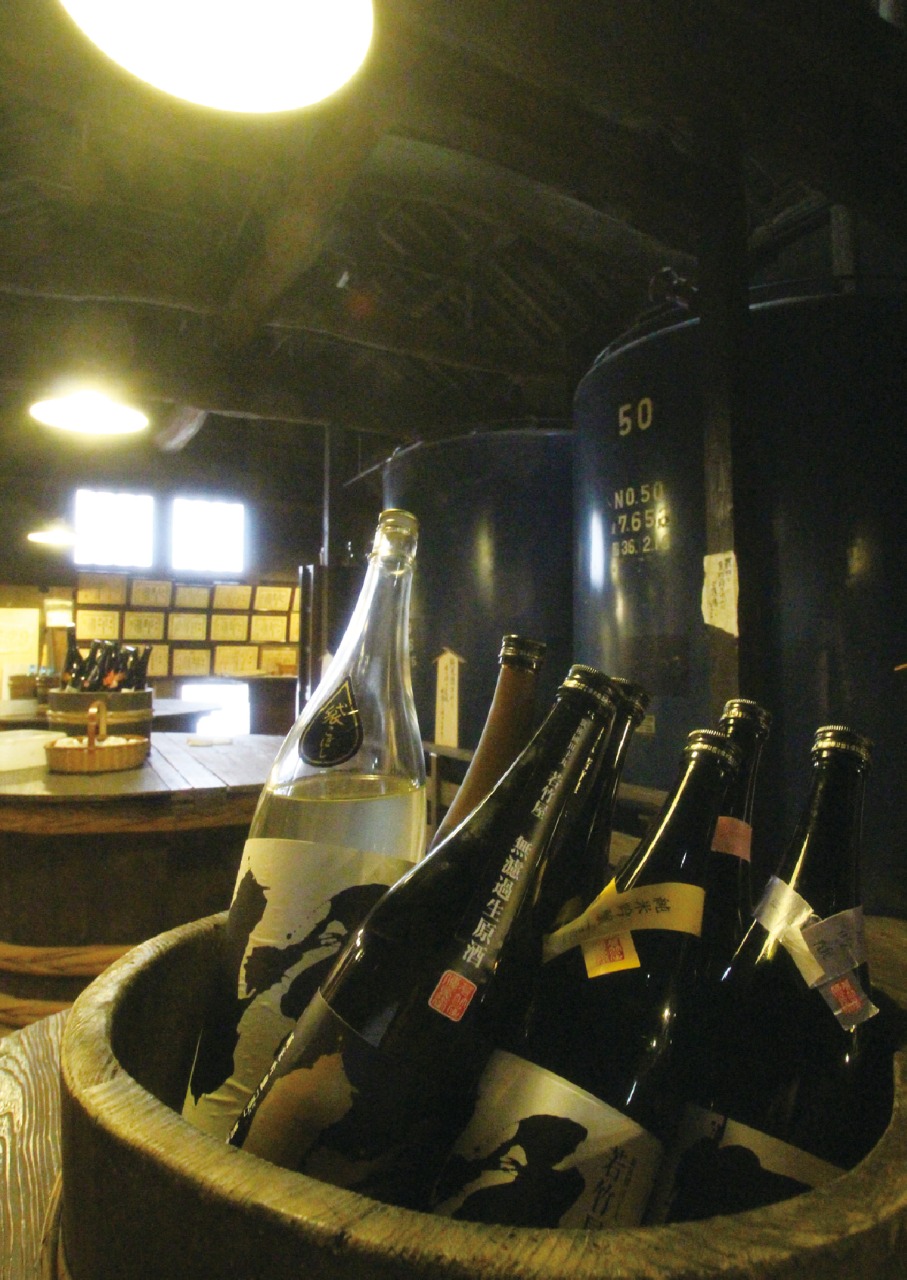
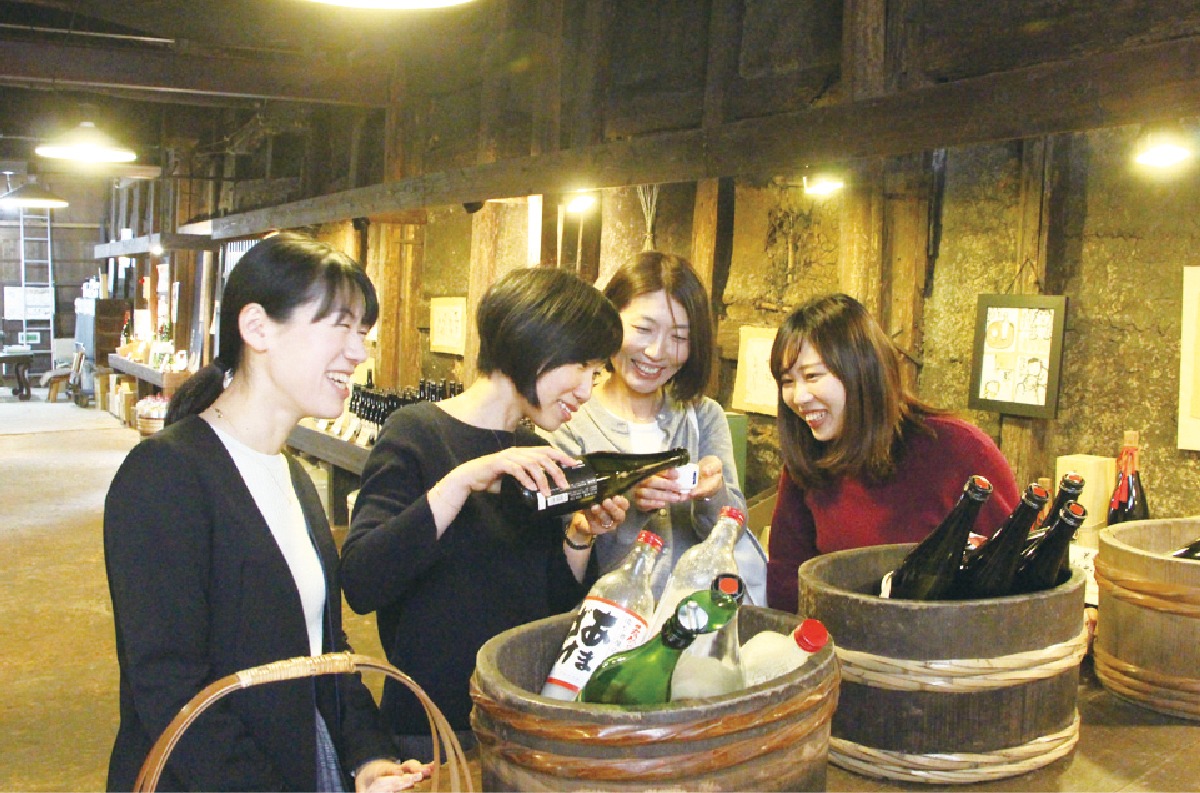





To the underground water drawn from the north foot of Mino foothills and the barley and koji (rice malt), sesame seeds were added to develop the world's first sesame shochu. The founder's wish to make liquors tasting like fragrant water is honored here. All of their shochu, whether made with sesame, barley or potato, is slowly matured in a storehouse surrounded by nature, creating a smooth and mellow flavor.
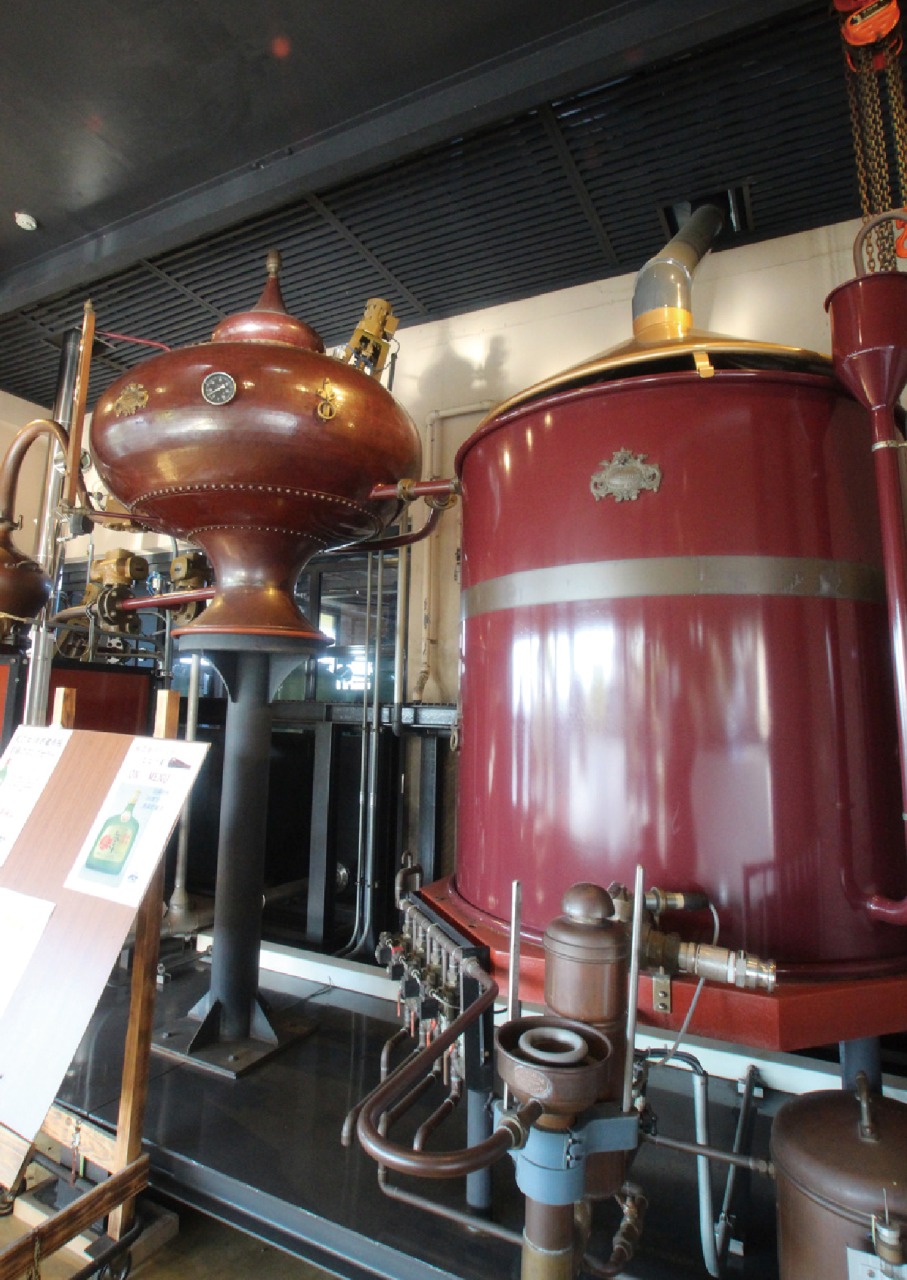
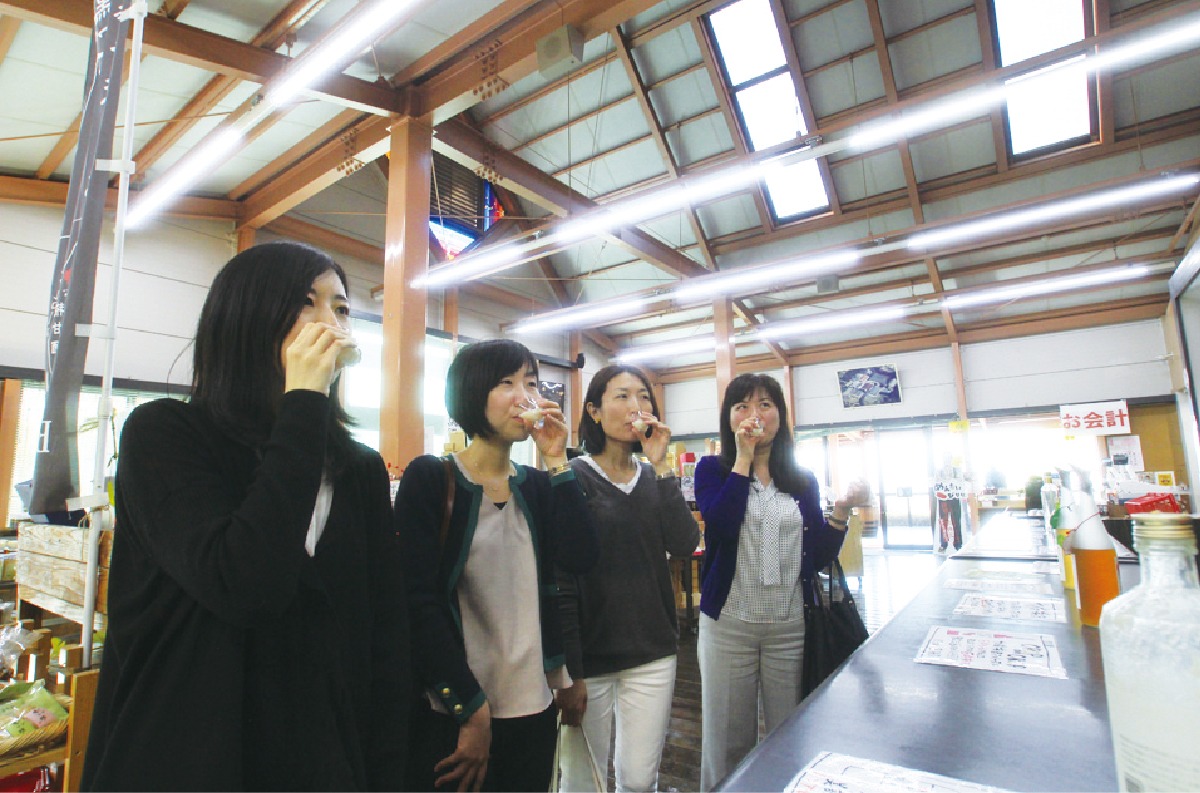
After sampling all the sake, be sure to buy a bottle of your favorite. You can also enjoy their gelato, flavored with black sesame amazake, not sold anywhere else!





Using ingredients chosen for their high quality, such as Amao strawberries, Amanatsu citrus fruits, Kyoho grapes and Fuyu persimmons, they produce seasonal fruit wines for you to taste. In the forest surrounding this winery, your heart will be healed by the expansive natural scenery of all four seasons.
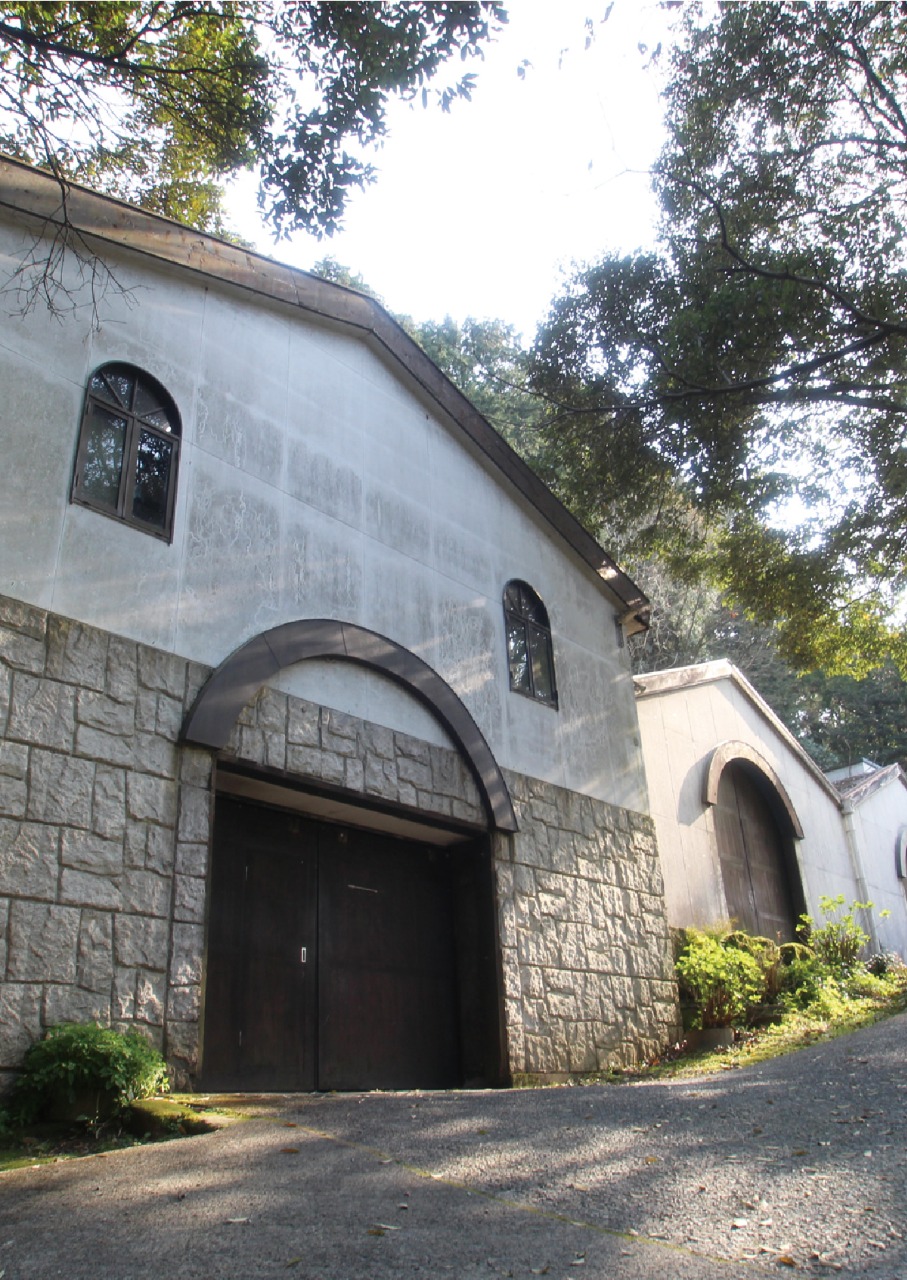
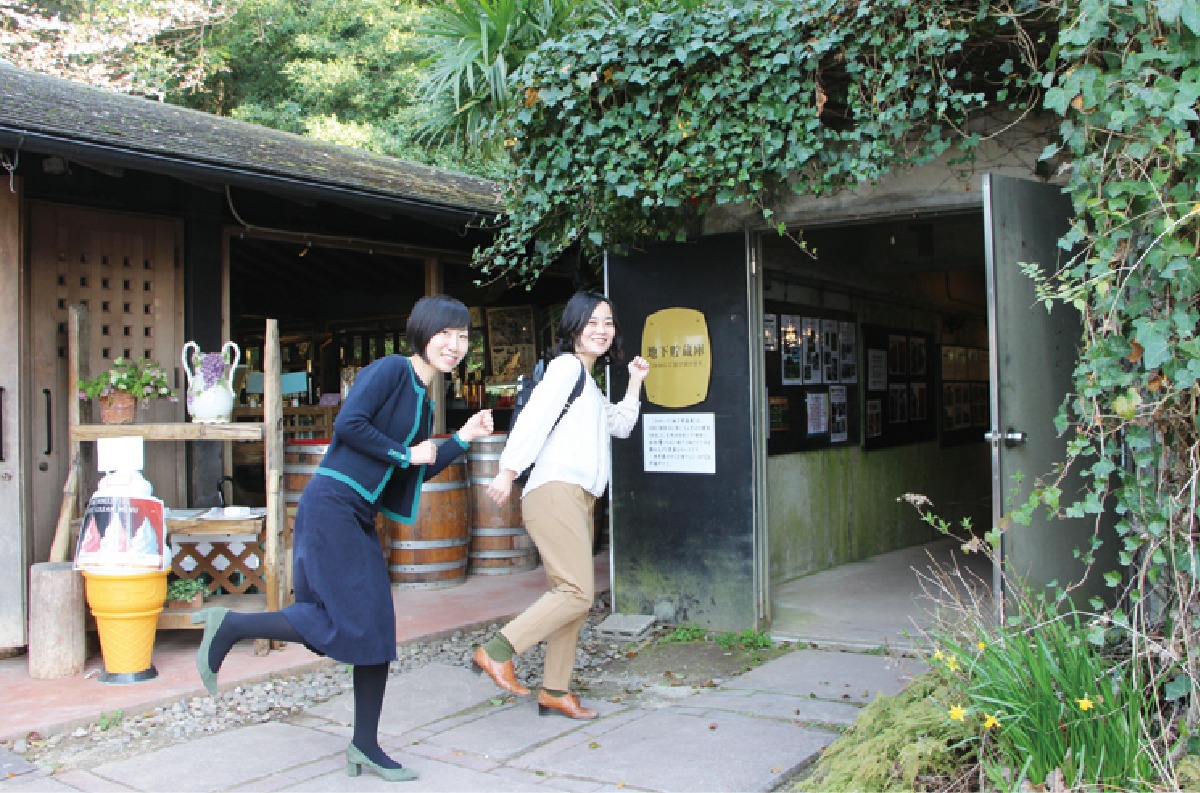
This is a winery in the middle of a forest. They also have a restaurant and a shop.


The brand concept is, "Have a good time with Yama no Kotobuki".
According to company president Katayama, "Our sake will be with you for happy moments, good times, and to reward hard work". Aiming to improve the environment through natural cultivation, they have contributed to regional revitalilzation with their Munakata Japanese Sake Project. Their "Yama no Kotobuki Mansaku", a sake limited to Fukuoka, is also popular.
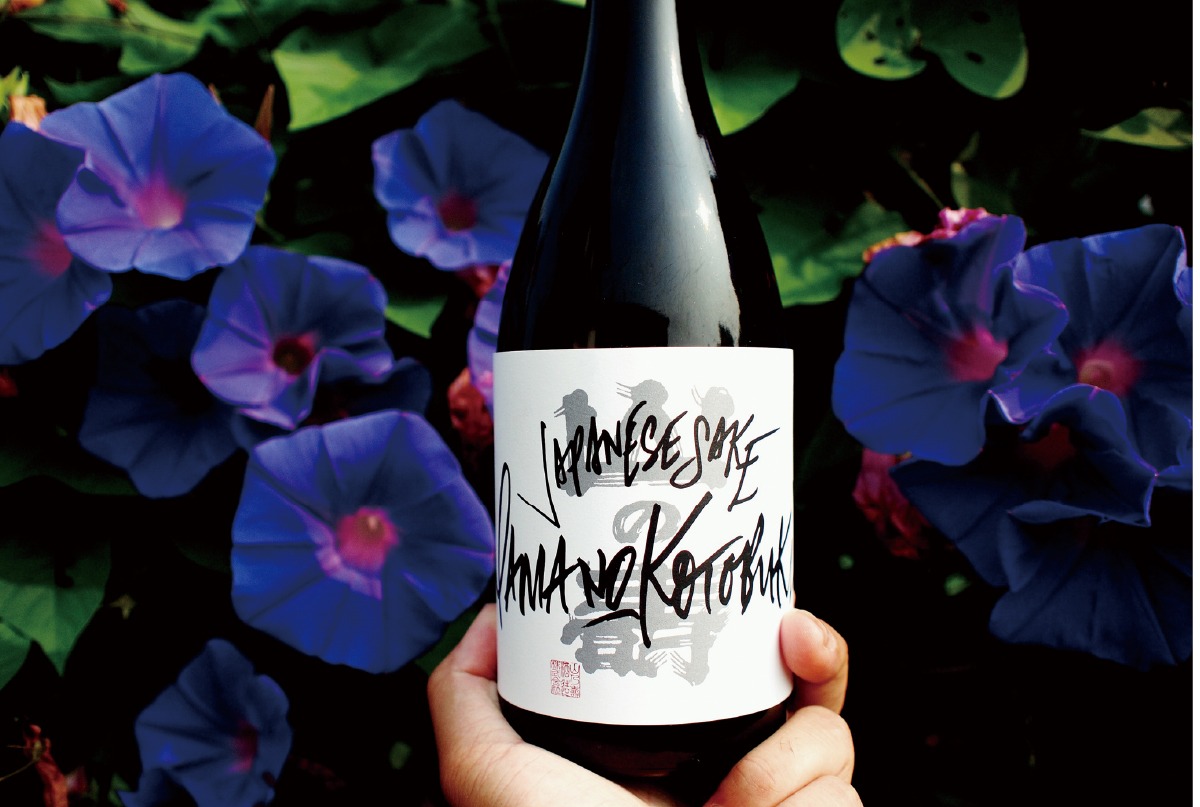
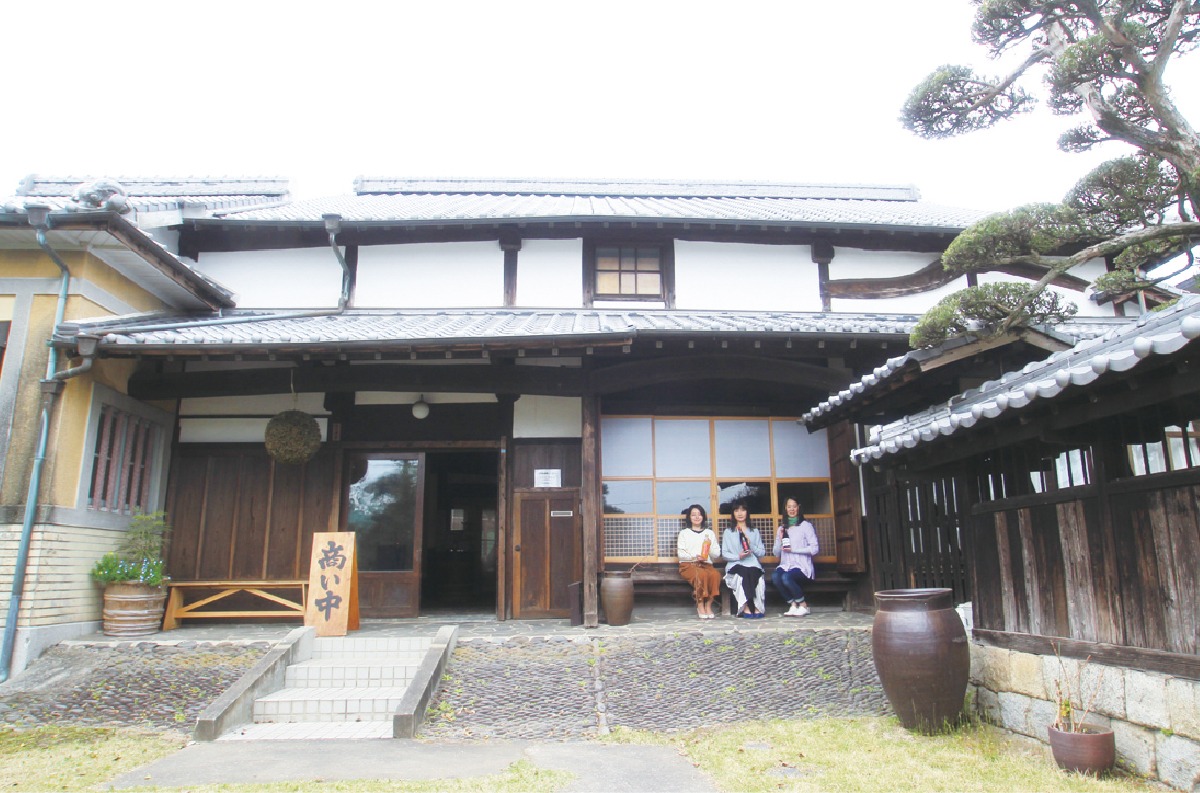
The lovely white-walled building is perfect for a snap!

According to company president Yamaguchi, "Sake plays a supporting role. Let's make the kind of sake that complements Kyushu cuisine". Instead of making strong, unrefined sake, they pursue an original light, clear taste that brings out the flavors of paired dishes. Their brand, "Niwa no Uguisu", is named after a Japanese nightingale that lanked on the spring in their garden. All of their liquors are made with delicious water.
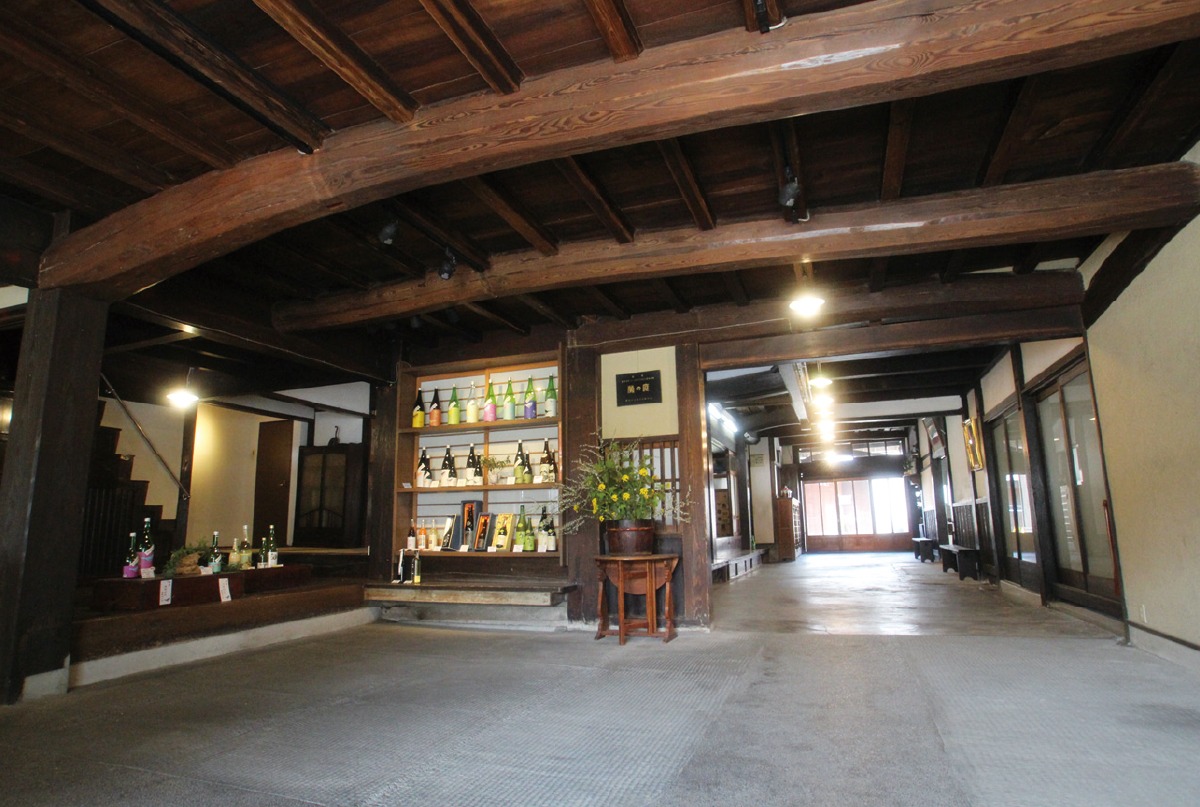
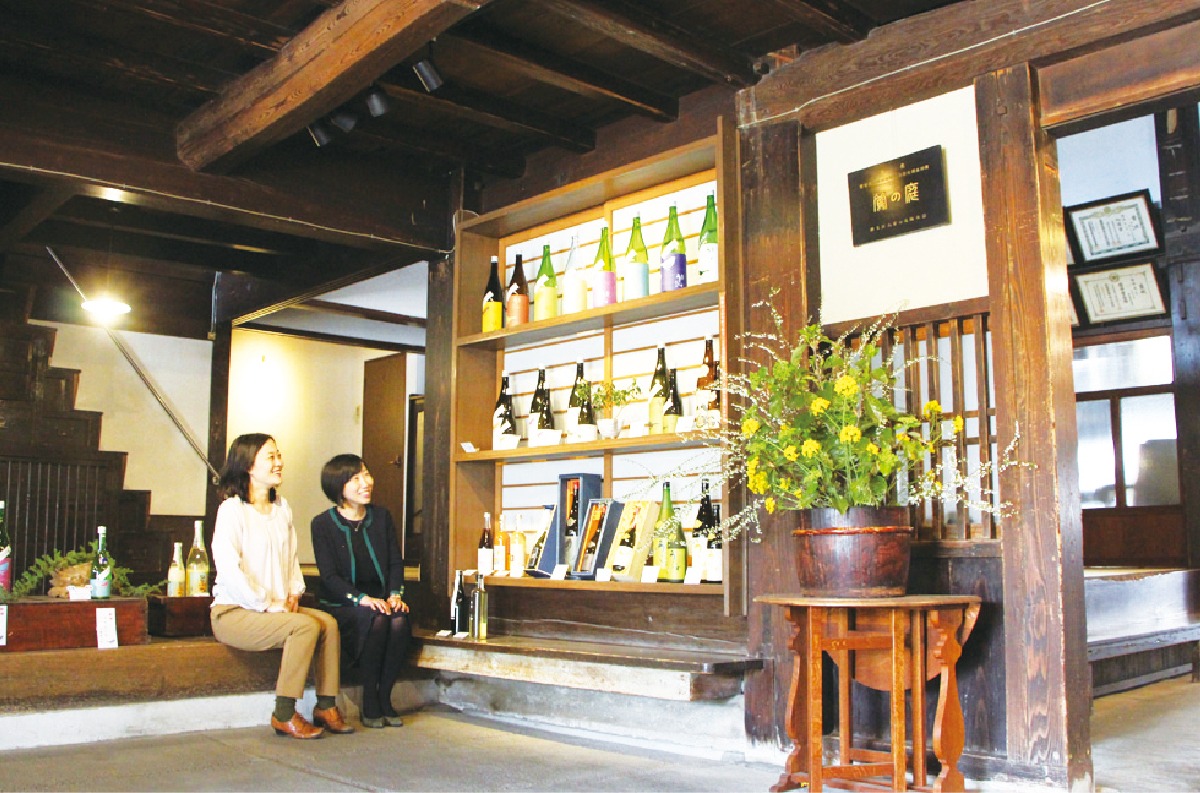
The colorful bottles that change with the seasons are Instagram-worthy!

Its distinct red-brick building dating back a century is where time is taken to develop and produce shochu utilizing traditional fermentation and distillation techniques. This company is ranked as the 3rd largest shochu shipper in Japan.
"Kurume no Hana", a shochu made with barley produced in Kurume, is sold in Kurume supermarkets.
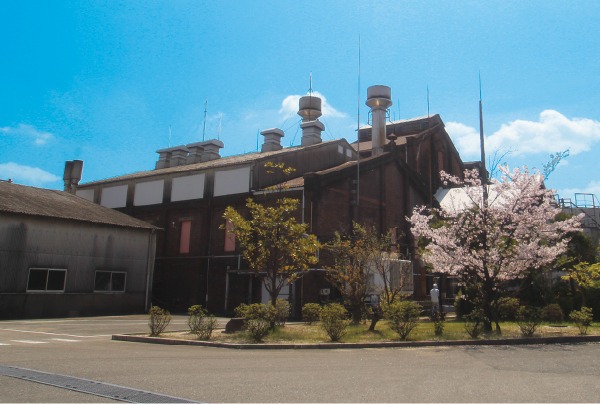
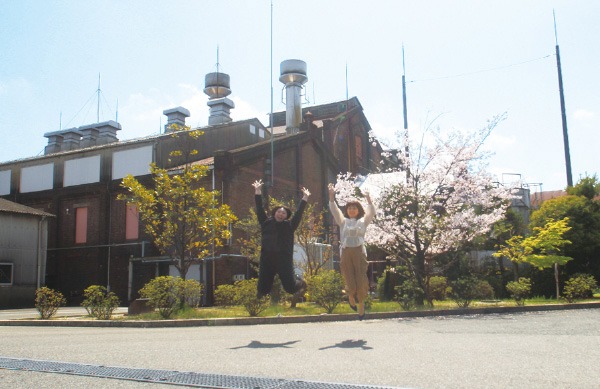
From the train, you can also see a red-brick building, redolent of history!



Each bottle is brewed with president Tsurusaki's wish to taste the freshly made "Koji" (rice malt) in their sake. In addition to their sake made with "Mizuho Ginjo-sui", water found 250 meters underground, the "unagi" (eel) cuisine at Mizuho-An, a restaurant in a renovated sake warehouse, is exquisite.
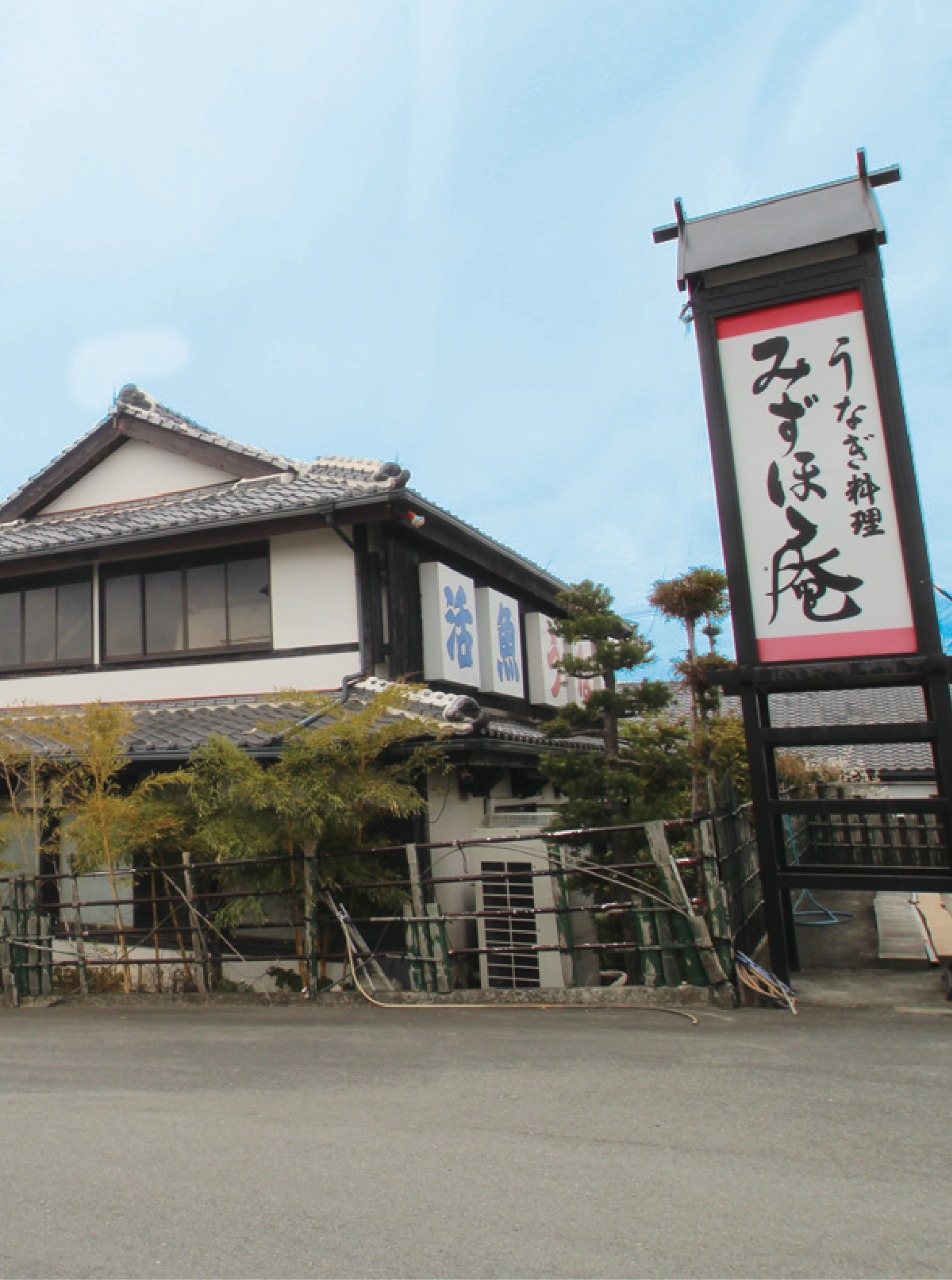
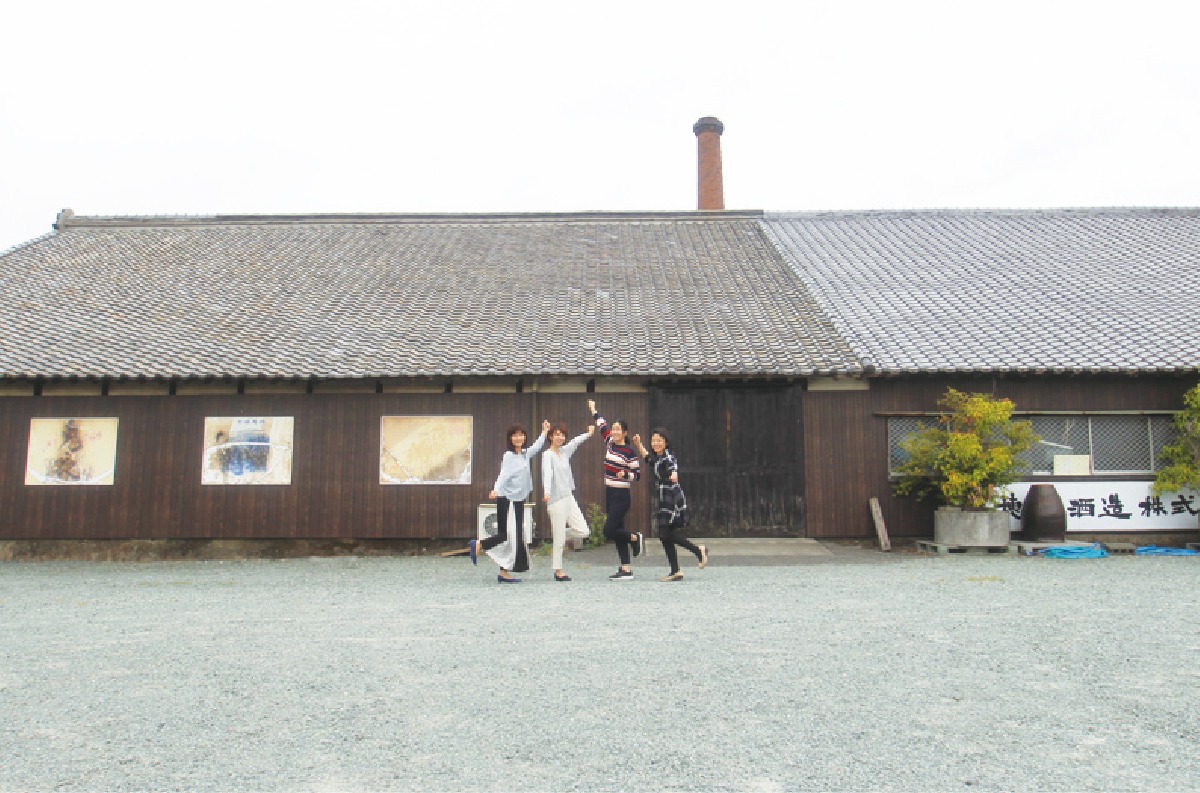
For an extravagant meal, why not savor "unagi" eel cuisine with a bottle of sake?



To hear you say one word, "Umai" (tasty), they are absorbed in brewing sake that meets the taste of the times. Their shochu, "Mecha-uma Mugi", is popular all over Japan, winning the gold medal four years in a row at the Fukuoka Prefectural Assembly Excellence Award.
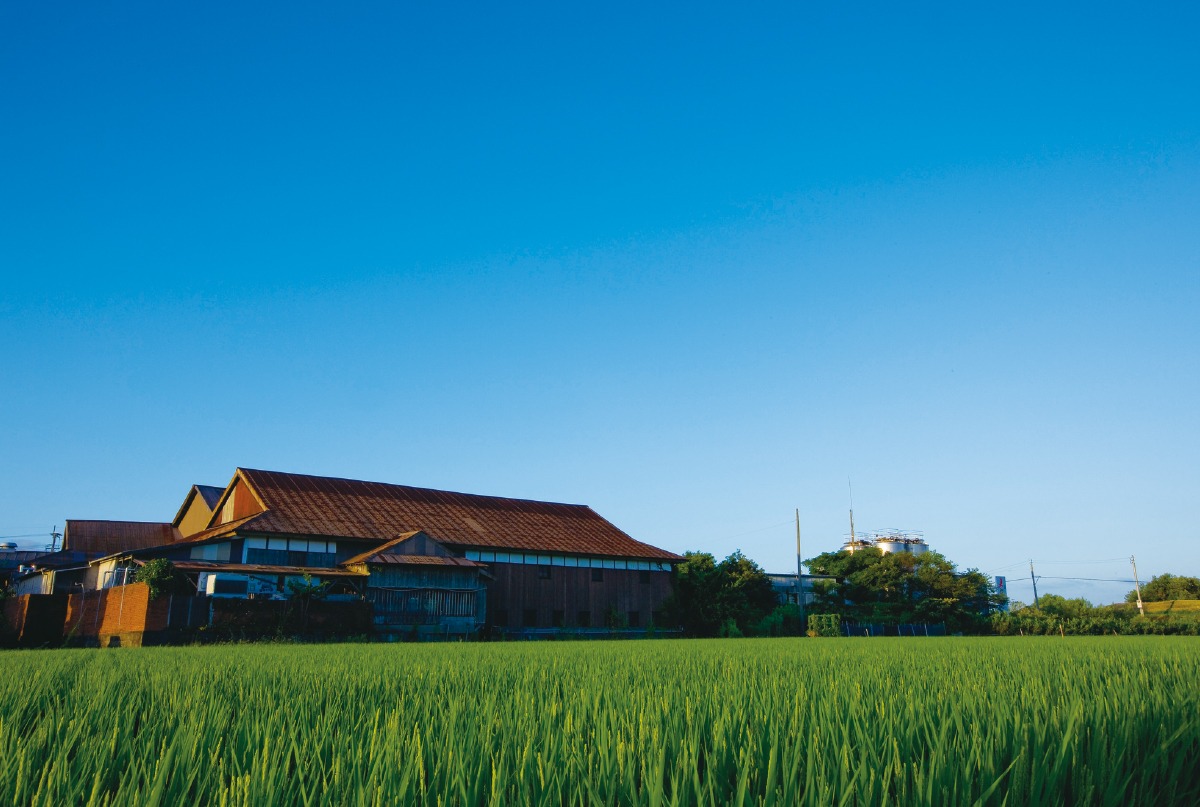
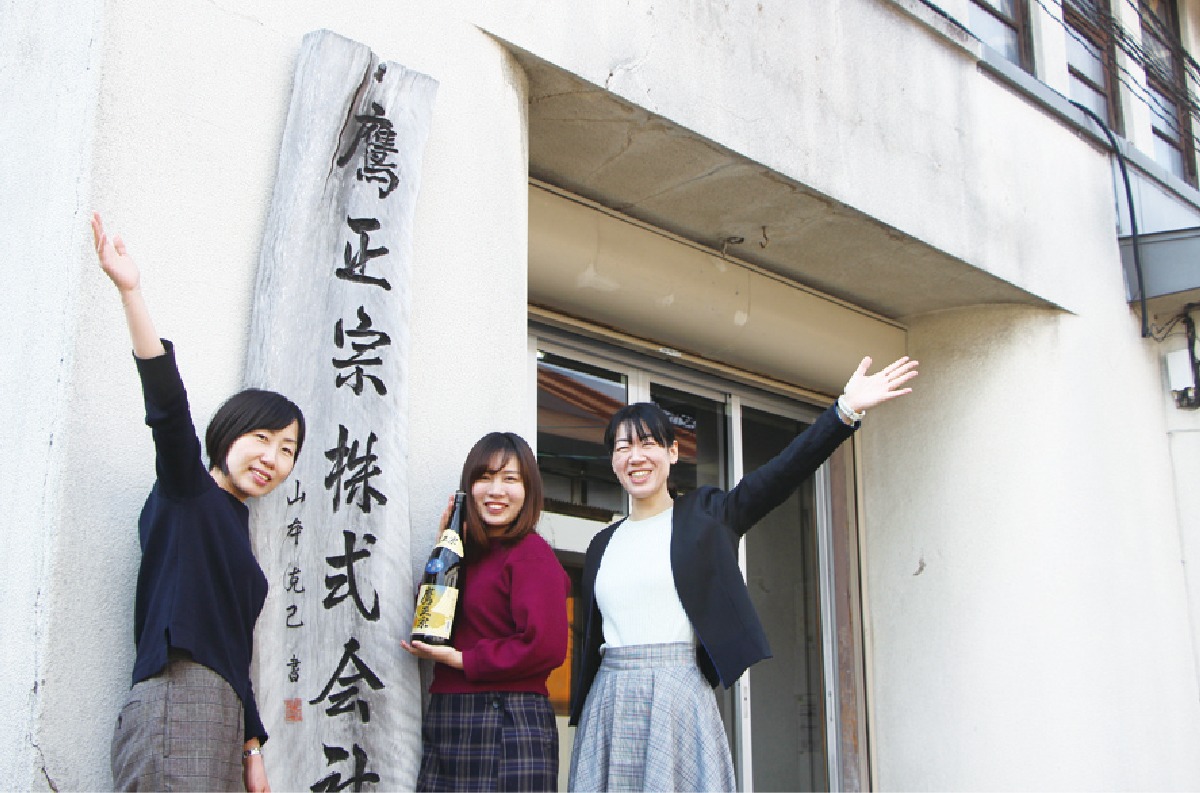
There are tasty sakes sold at reasonable prices, too.



This brewery distills authentic shochu and sake to savor with modern cuisine, making use of the local bounties of nature. From rice hulling to sobering up, they will suggest how to enjoy the whole process of sake-making, starting from cultivating the rice. Along with sake to savor for its freshness in season, this brewery is known for products that are slowly matured to deepen their flavor.
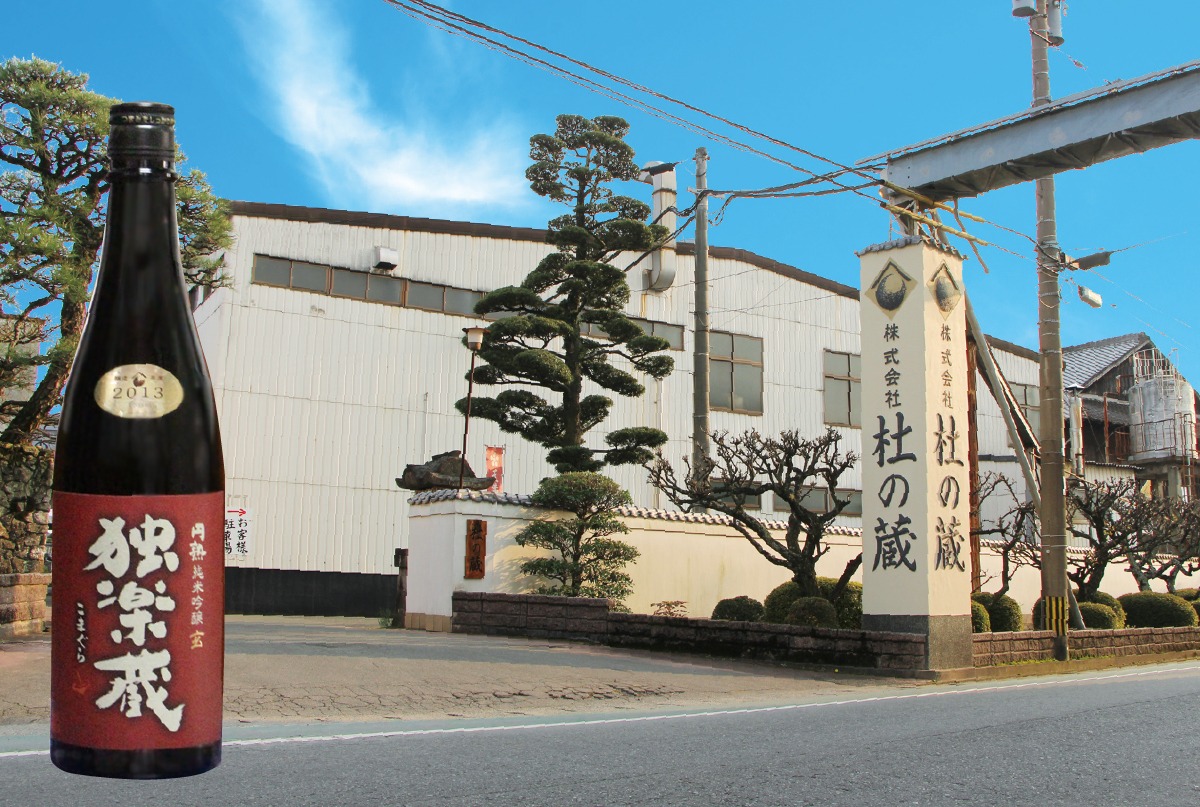
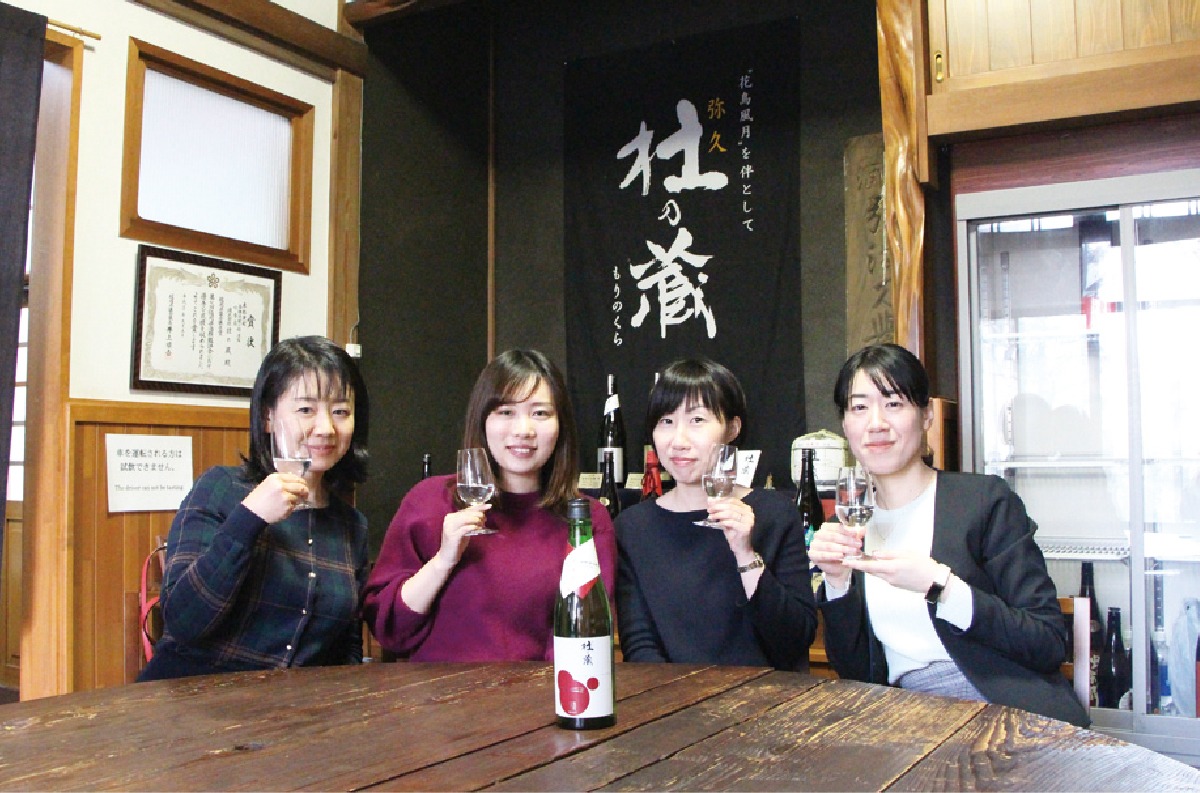
You can also buy original cups that will make your sake taste even better!



"Daiginjo Fukurokoshi" is their pride and joy. This high-quality sake, made of rice grains polished to under 50 percent of their weight, is brewed by a drip-method, using a sake bag placed inside the tank and filled with unrefined sake. Another popular item is their "Genmai Nihonshu", sake made from unpolished rice. Orders come from far and wide for this type of sake, which is made by only 4 or 5 producers throughout Japan.
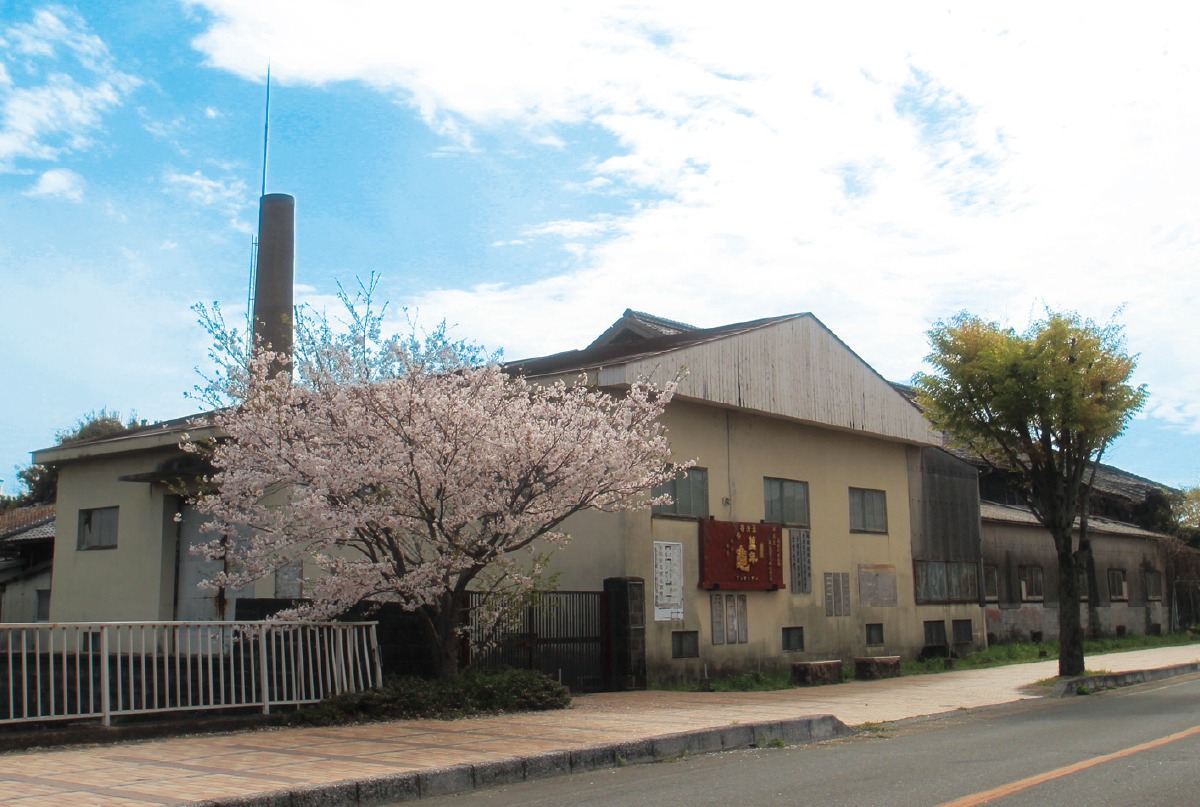
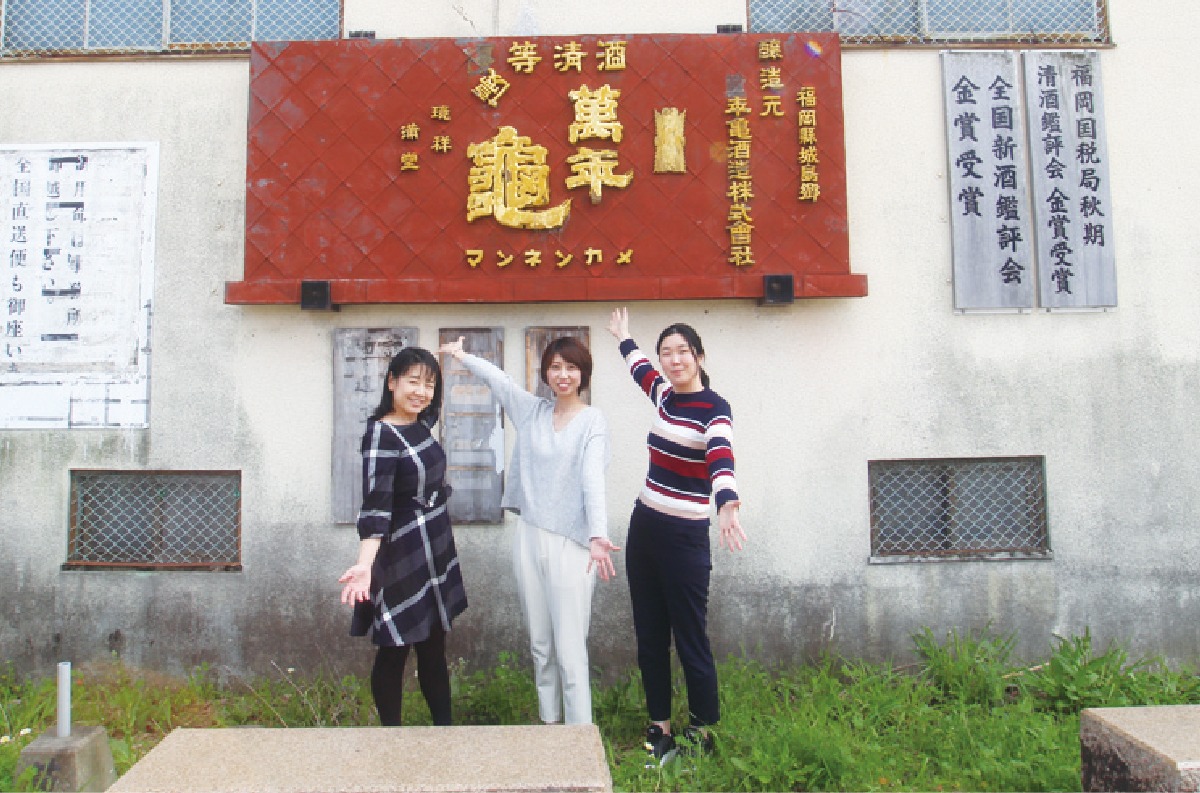
Fresh, unheated Japanese sake is sold year-round.

With an old-fashioned taste that you never tire of savoring, their sake is brewed to be paired with meals. Since their sake is mostly pure junmai-shu, it tastes like freshly cooked rice when heated. Let the original full flavor of the rice spread throughout your mouth.
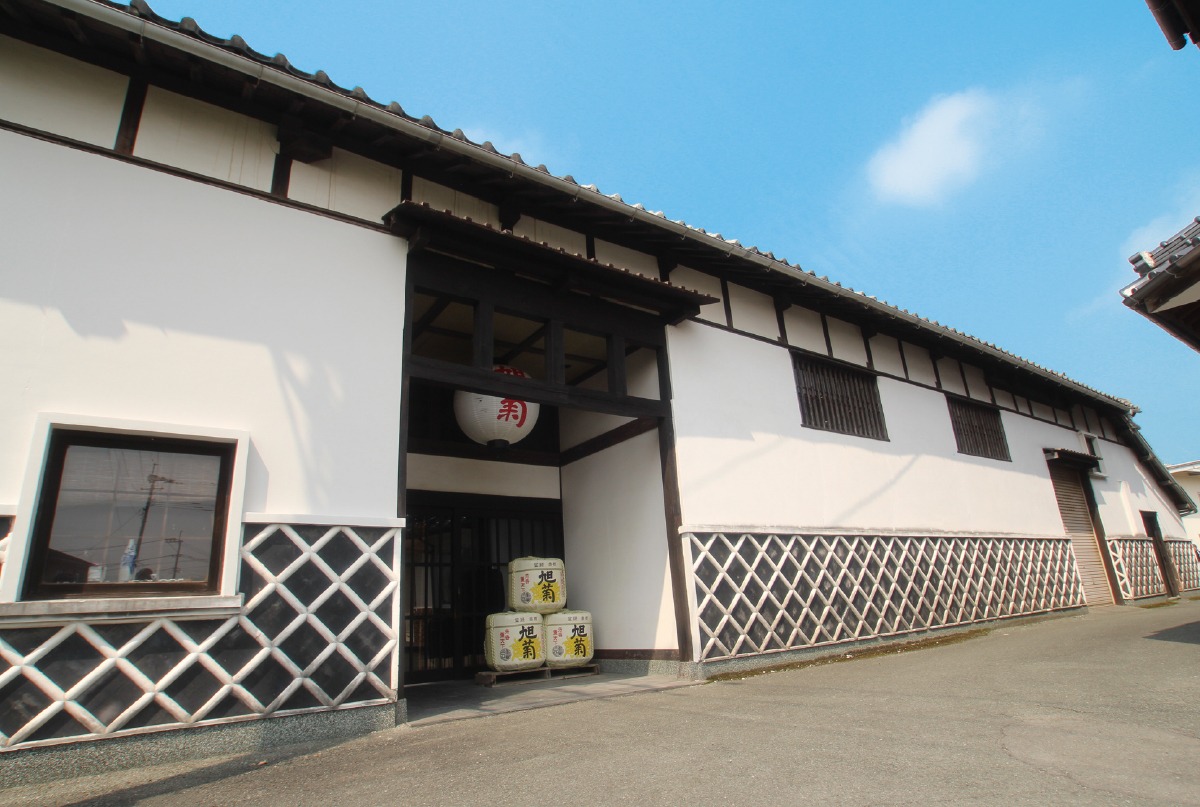
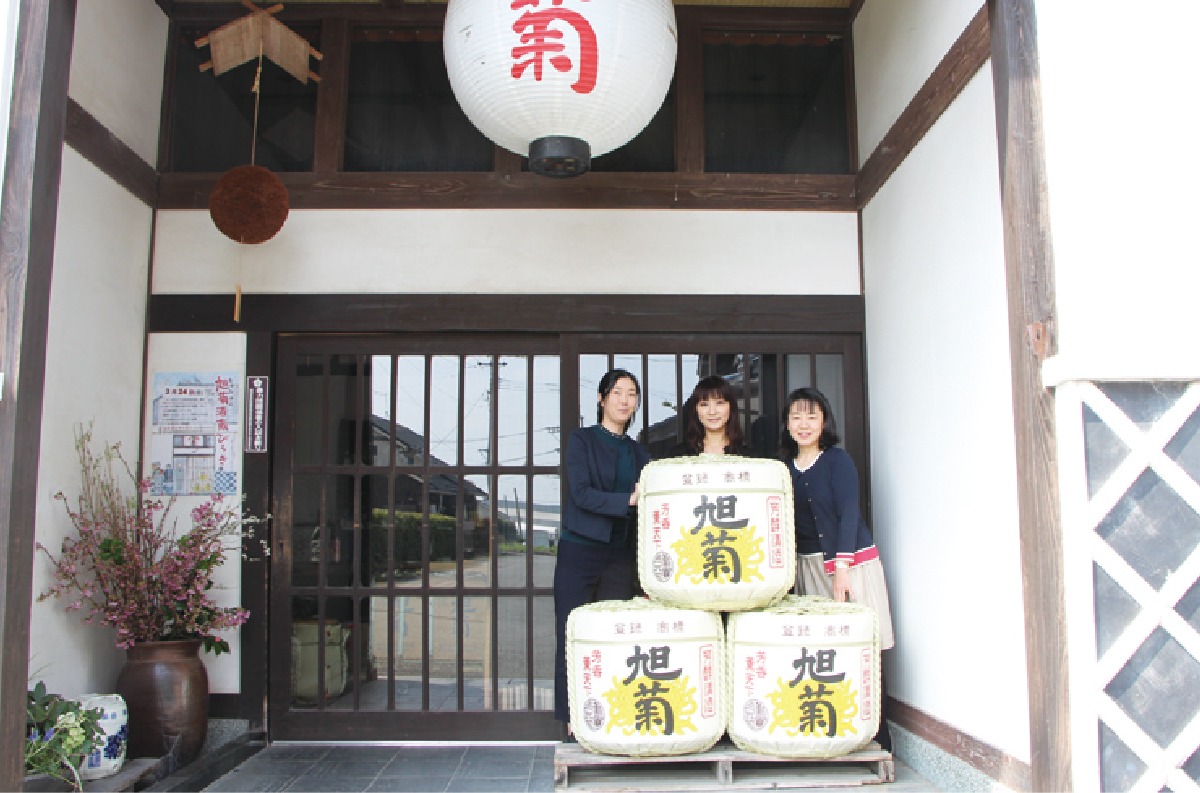
Taste the elegance and charm of the Sakagura's past.
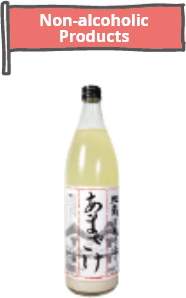




Meeting a variety of needs, they offer a full lineup of Japanese sake, shochu and fruit liqueurs, as well as Japan's first umeshu (plum liqueur) jelly and amazake (sweet sake lees) soft-serve ice cream. Enjoy free samples at a table made from the lid of a sake barrel!
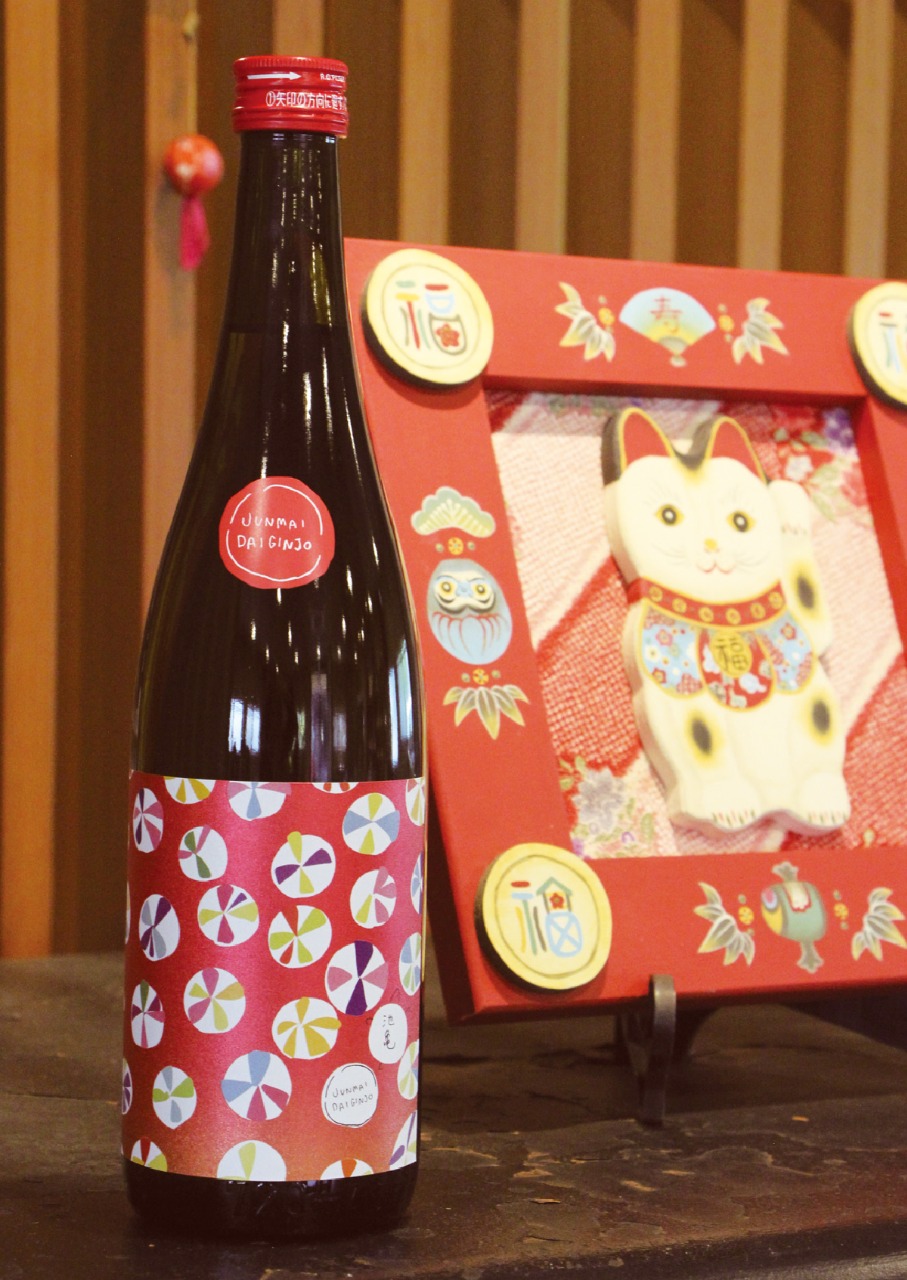
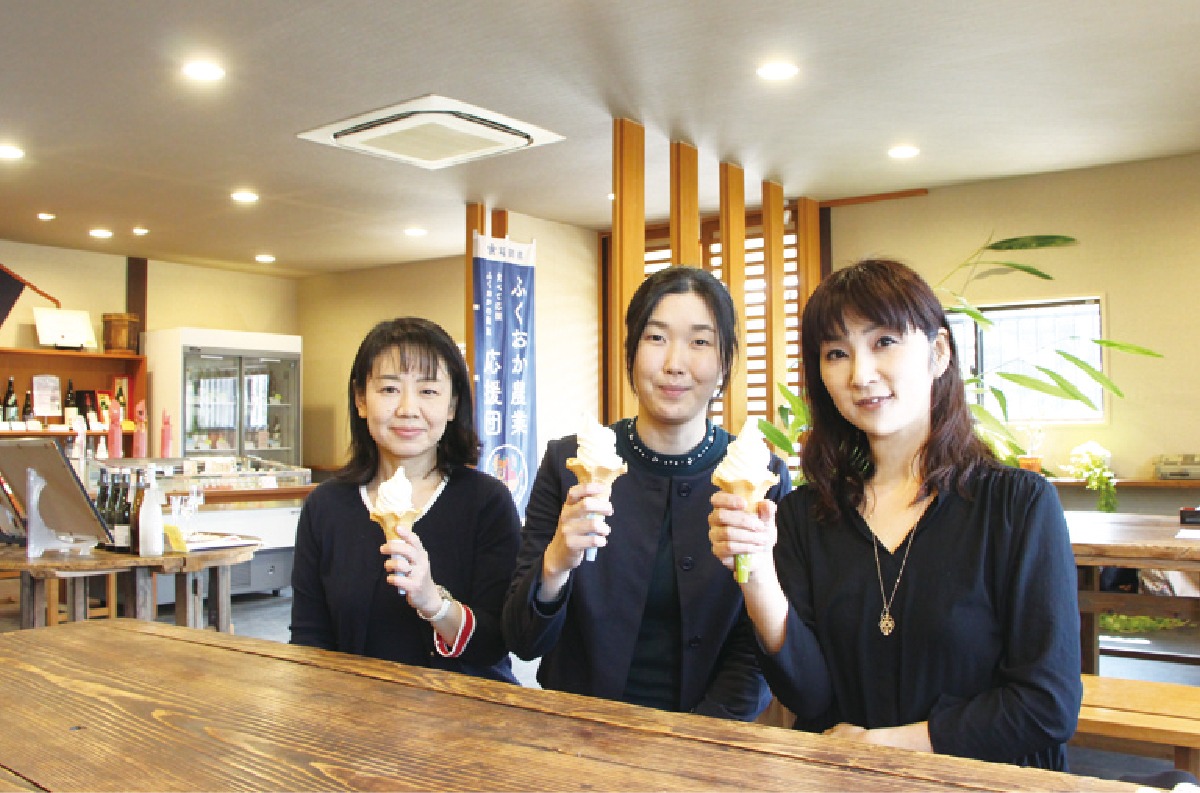
With sweets such as cheesecake and umeshu jelly, savor a different pleasure!




To bring out the flavors of the food and enhance the pleasure of drinking it with meals, this sake is brewed under a policy of restraining assertive aromas and flavors. Just like the early morning dew on flowers, its mild taste connotes the ancient Chinese poem from which the name, "Hana no Tsuyu" is derived.
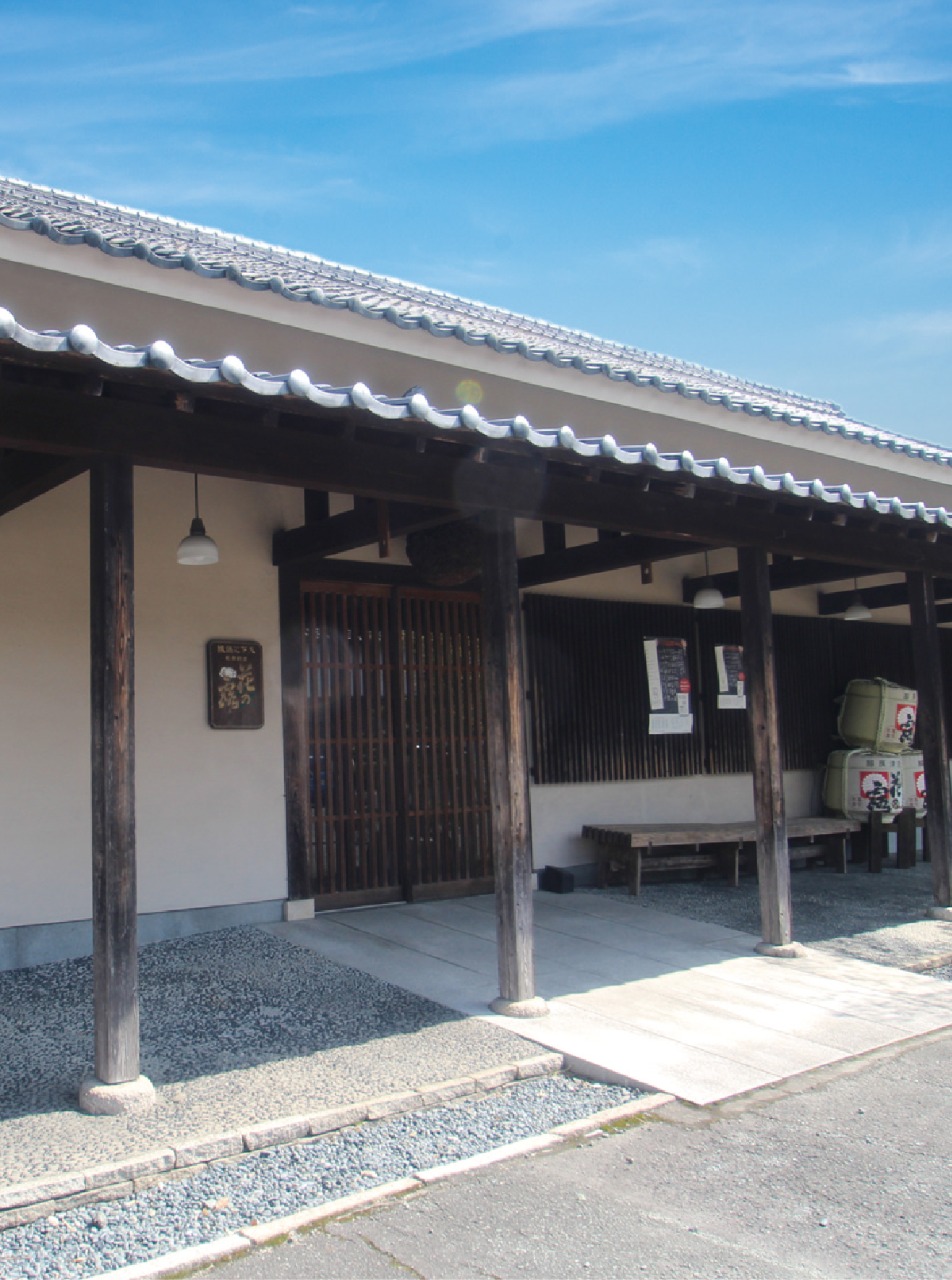
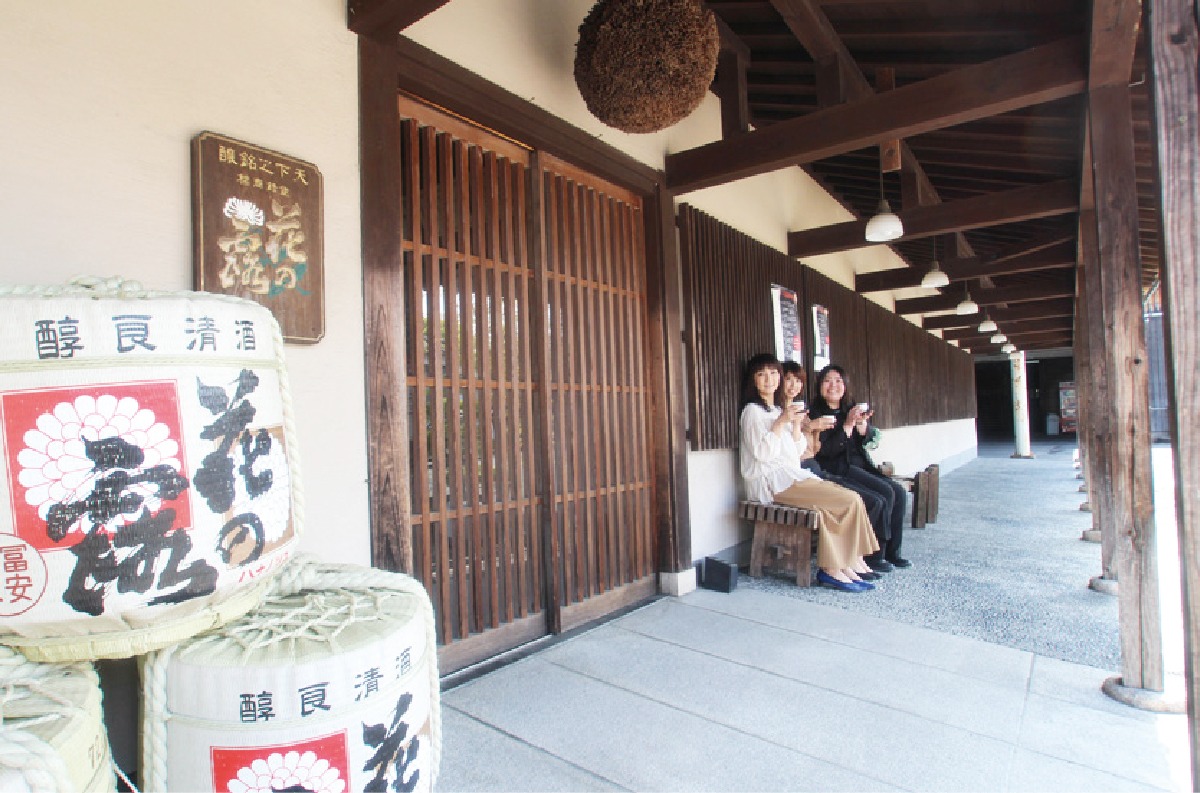
The atmosphere surrounding sake towns is also nice!




To make this sake, soft water of high quality is drawn up from waters 200 meters below the Chikugo River. Using their own carefully polished, locally grown sake rice, their smooth and deep sake is reminiscent of bygone days.
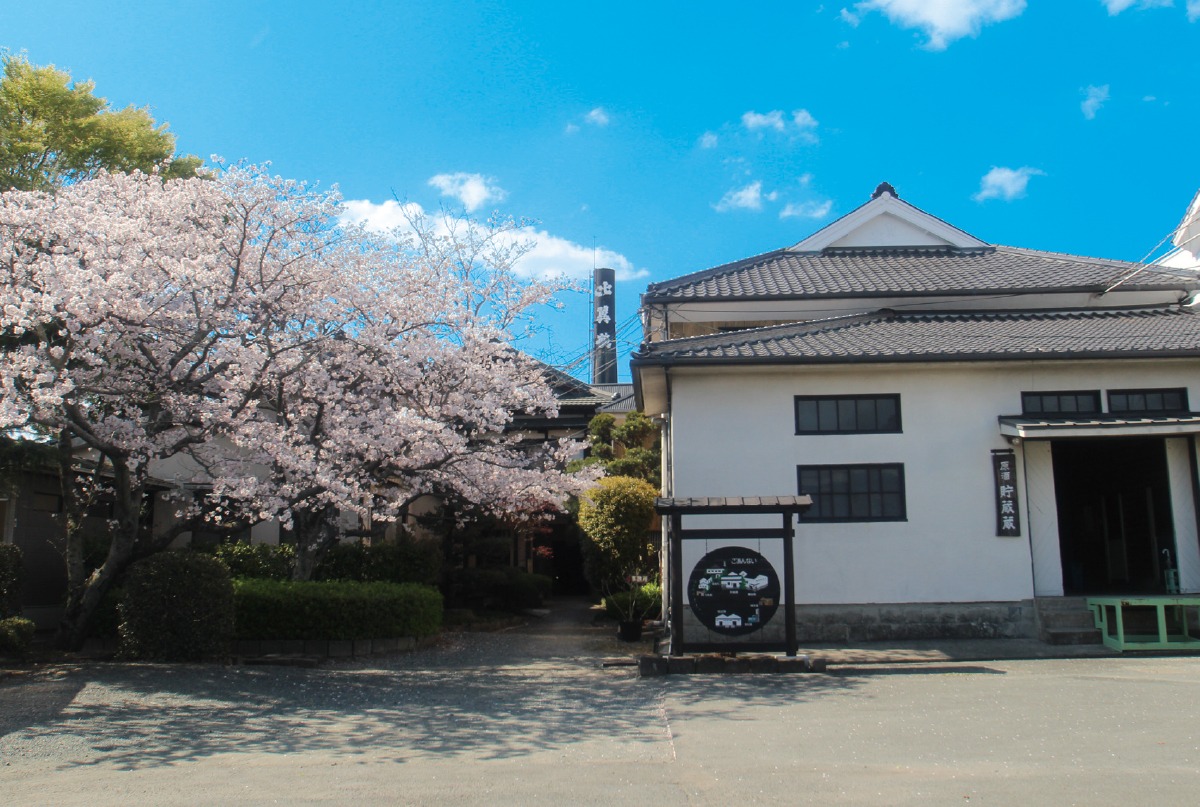
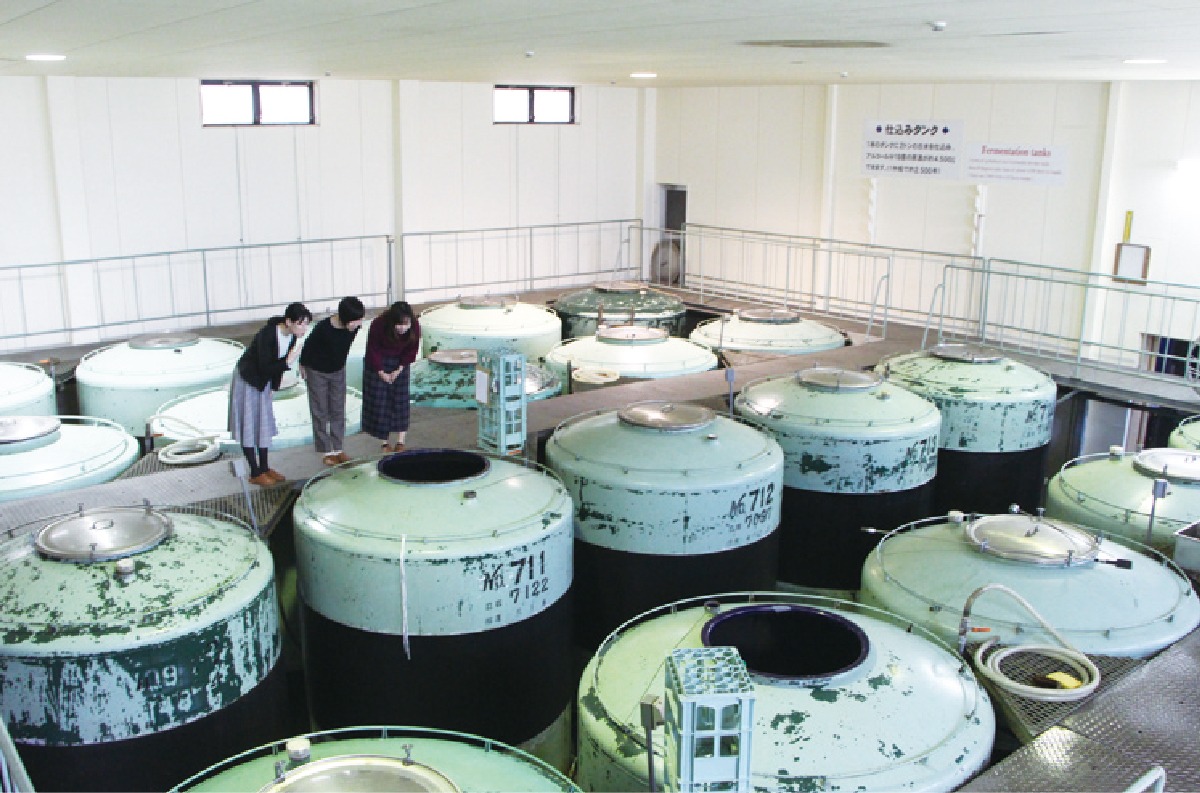
With its giant tanks of sake lined up on the brewery floor, a Sakagura tour is the highlight of any visit!



This brewery is jointly operated with the community living in the bountiful nature of the Chikugo River. They also sell amazake, miso and narazuke (pickles) made with koji (sake lees) cultivated in a room kept at 30℃. From May 15 to July 5, their formal Japanese room is open to the public. Japanese grenadier anchovy cuisine is served with their sake (reservations required).
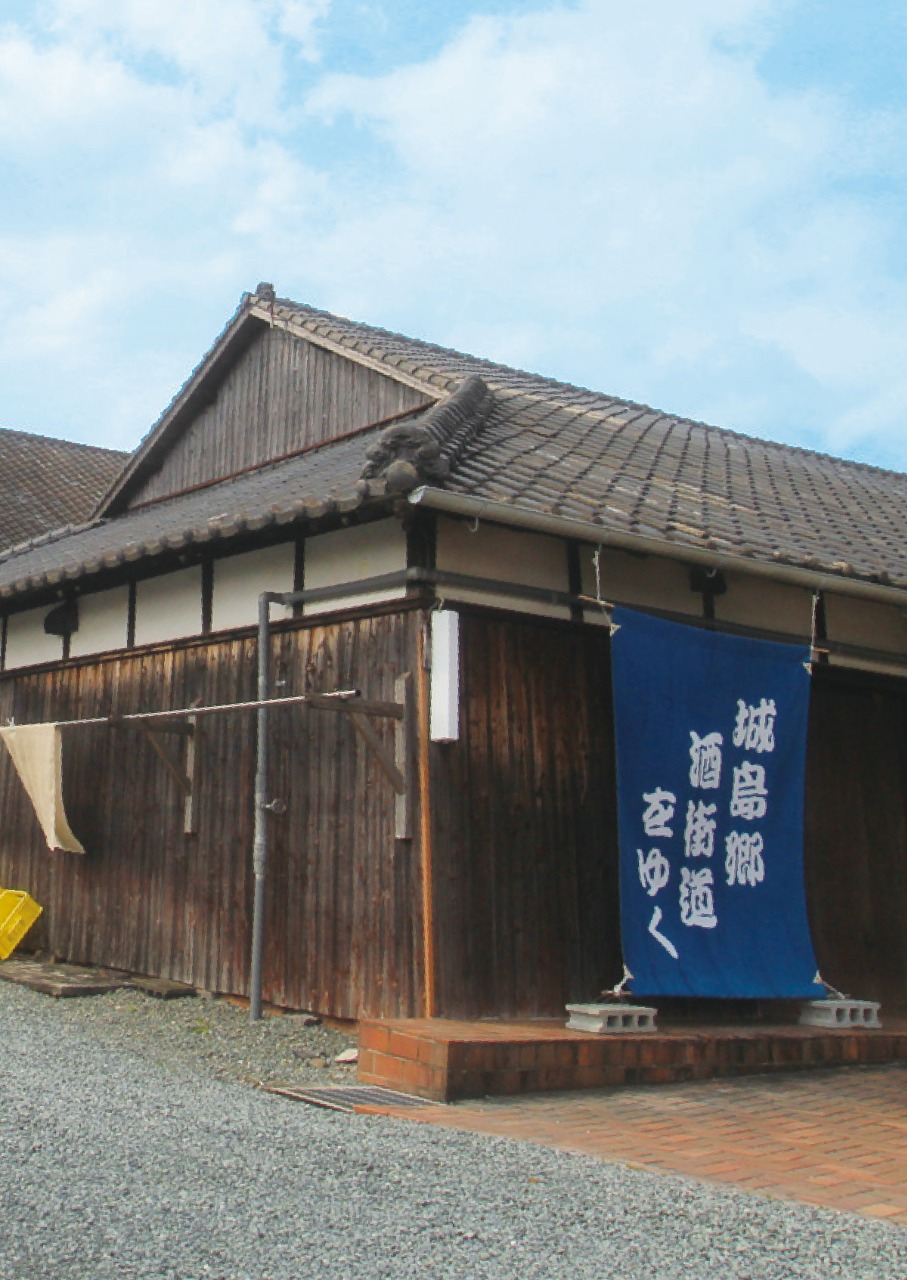
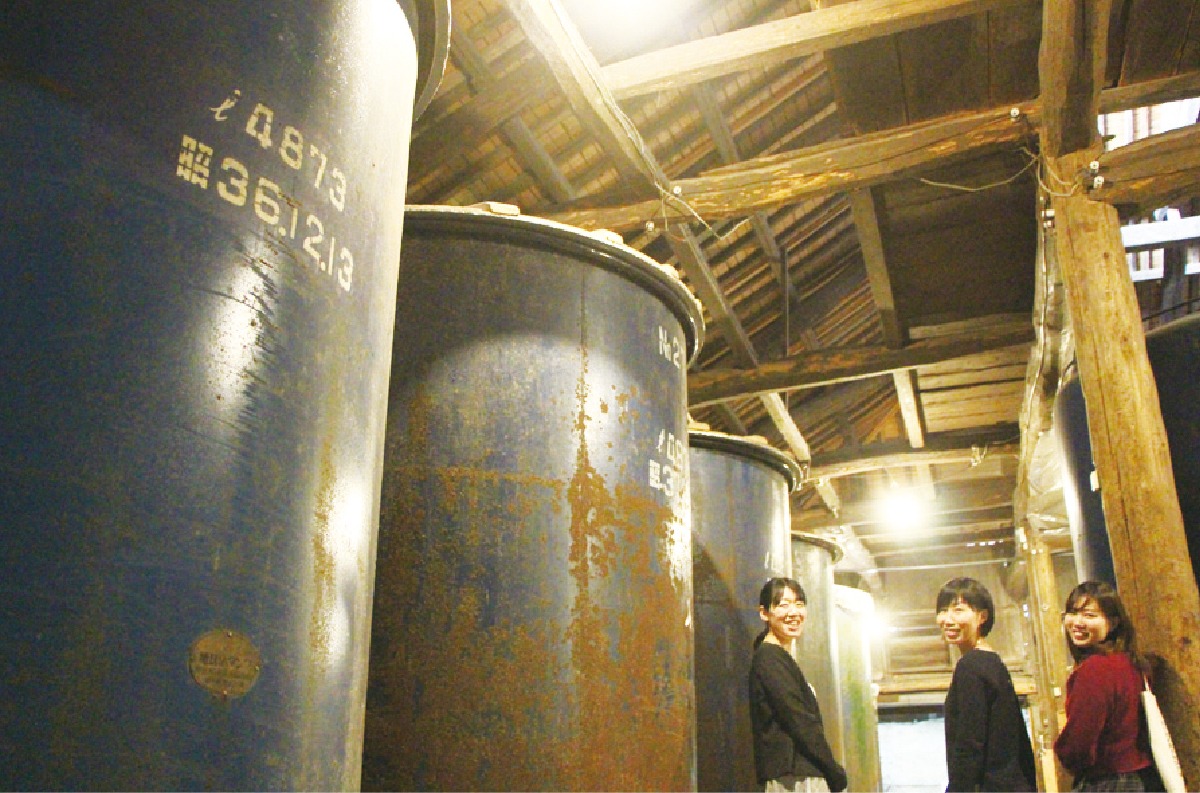
The handmade miso and "narazuke", vegetables pickled in sake lees, are also highly recommended!


Source of reference:From Fukuoka Sake Brewer's Ass'n. "Sakamoto Map"
For more details about these sake breweries,
please see the Fukuoka Sake Brewer's Association Website!http://www.fukuoka-sake.org
Special liquors line the shelves! The ambience is also lovely!